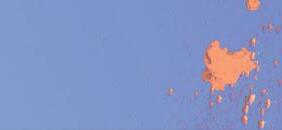WATER SUPPLIES
SHOPPING MALLS
FIREFIGHTER WELL BEING
FIRE
SPRINKLERS & WAREHOUSES ROOFS

& FAÇADES


WATER SUPPLIES
SHOPPING MALLS
FIREFIGHTER WELL BEING
FIRE
SPRINKLERS & WAREHOUSES ROOFS


our patented explosion proof actuator with supervision is UL HazLoc, ATEX, and IECEx certified for use in hazardous locations and is currently available to the global fire suppression market.
+ Does not act as a pressure vessel, reducing potential leak points + Actuator acts as its own enclosure
+ Accommodates operating pressures up to 300 bar
our patented high-pressure supervised latching actuator features integrated installation detection and is fully compatible with CO2 systems.

+ Recognized to UL 864
+ Meets NFPA 2001: Sec. 4.3.4.1 requirements for supervision
+ Accommodates operating pressures up to 300 bar
+ Interfacing options are customizable to fit your system
CONTACT US ABOUT YOUR FIRE SUPPRESSION NEEDS.
sales@tlxtech.com | tlxfire.com
12 Fabulous malls require unique fire safety solutions
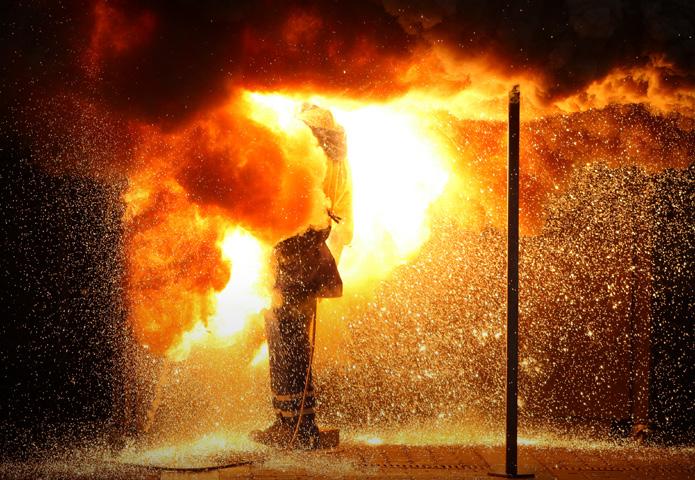
As the region’s capitals compete to see who can build the most spectacular mall, Dominic Jeff details the advanced devices and methods that can help protect these fabulous venues.

16 The challenges of Commodity Classification
In his article, Len Swantek takes a closer look at warehouse storage protection from the perspective of Commodity Classification and the critical characteristics that impact the type of sprinklers used.


Cladding
29 Implementing compliance in cladding
24 Safely covered?
Esther Gitau explains ASTM E108 - a standard test method for evaluating the fire performance of roof coverings which determines the fire characteristics of various roof coverings, including asphalt shingles, tiles, slates, metals, and wood.
The era of giga-projects is what will define the region’s construction sector in the coming years writes Abhishek Chhabra and this is an opportune time for industry to take a better look into how (fire) compliance gets implemented… in this issue he focuses on cladding.
Giving back
32 To the rescue
Bob Rea is thinking about the effects of the devastating earthquake which struck Turkey and Syria in February this year and reflecting on the impacts of training programmes he has been responsible for.

Society of Fire Protection Engineers
40 Water supply and climate change Virginia R. Charter, Phd, Pe, Justin Fletcher and Cristian Contreras Nieto, Phd, Pe add their three authoratitve voices to the discussion on the impact of water stress on water-based fire protection systems.
PPE: FABRICS
36 Flame retardant fabrics
An examination of terms, fibres, tests and norms.
FIREFIGHTER PPE: DECONTAMINATION
38 Research should inspire positive action
The UK Firefighter Contamination Survey has resulted in the publication “Contamination of UK firefighters personal protective equipment and workplaces” which will hopefully inspire positive action to protect firefighters not only in the UK but also around the world.
The Institution of Fire Engineers
42 Improving building safety enforcements globally
With an unprecedented rise in natural disasters, Steve Hamm, provides an update on how stringent building safety laws will minimise the devastation to local infrastructure.

Institute of Fire Safety Managers
45 The IFSM Research Scholarship Fund

This initiative makes up part of the Institute’s plans to boost creativity within the industry and inspire the next generation of fire safety professionals.

Designed to make installation and commissioning quicker and easier, REACH Wireless is Apollo’s latest hybrid-wireless solution.
Scan the QR Code to explore how REACH Wireless can make installing a new fire detection system easier than ever.
“A Colchester school now has a single, integrated fire system across the main school building that only took a few hours to install thanks to Apollo’s REACH Wireless system.”
FOR MORE INFORMATION VISIT: APOLLO-FIRE.CO.UK/REACH




editor
Wendy Otway +44 (0)1795 530111 editor@firemiddleeast.co.uk

advertising sales worldwide
commercial director
Mike Dingle +44 (0) 1752 267 330 mike@firemiddleeast.co.uk
sales
Ryan Bickerton + 44(0)1752 265 802 ryan@firemiddleeast.co.uk
Gareth Driscoll +44 (0) 1752 260 603 gareth@firemiddleeast.co.uk
Rahul Vara +44 (0) 1752 604 352 rahul@firemiddleeast.co.uk
Kyle Kennedy
+44 (0)7867 641 955 kyle@firemiddleeast.co.uk
production team
Freya Tucker freya@firemiddleeast.co.uk
marketing manager
Paul Riglar
+44 (0)7496 377 603 paul@firemiddleeast.co.uk
designed by
Paul Buckley paul@riasca.co
This publication may not be reproduced or transmitted in any form in whole or in part without the written consent of the publishers.
© MDC Middle East Ltd. 2023
The Publisher and Editor do not necessarily agree with the content and opinions in editorial contained in Fire Middle East magazine.
For subscriptions and advertising enquires, or for further information on the magazine visit our website: firemiddleeastmag.com
Follow us @firemiddleast
fire middle east magazine
is published by
PFAS ARE OFTEN called “forever chemicals” because they do not naturally breakdown and can stay in the environment for decades and now the UK’s Health and Safety Executive (HSE) has conducted a comprehensive British analysis of Poly- and Perfluoroalkyl substances (PFAS) exploring what measures could be put in place to control and manage them.
One of their key proposals is that firefighting foams are prioritised for action. This will be founded on scoping work with stakeholders including industry, firefighters and those with expert knowledge of alternative foams.
There is clear evidence of occupational exposure, long term health issues and environmental harm that can come from current firefighting foams. It is also a rarely publicised fact outside of the fire sector that firefighters’ protective gear is also made with PFAS textile materials and treated with additional PFAS for water resistance, posing even further and devastating risks to firefighters who wear it.
The USA are already taking action… In December 2022, the Protecting Firefighters from Adverse Substances (PFAS) Act, cleared the US Senate and is now on President Joe Biden’s desk. It directs the Department of Homeland Security to offer guidance to federal, state and local firefighters about training and the best ways to reduce exposure to PFAS.
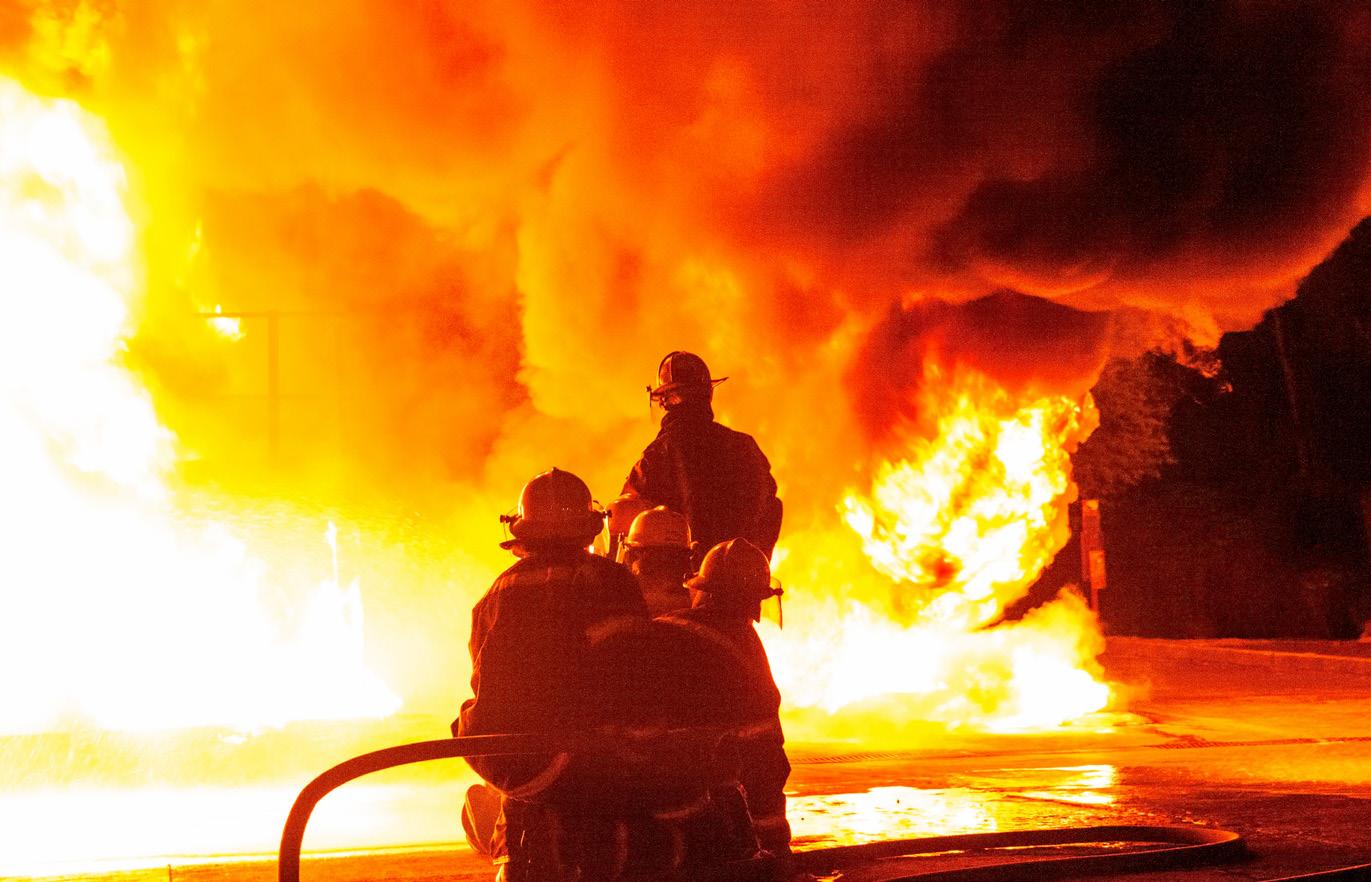
3 years ago, in Australia, a parliamentary inquiry regarding PFAS in collaboration with the United Firefighters Unions of Australia (UFUA) began considering how to reduce these risks nationally and through its international advocacy for the elimination of fluorine-based firefighting foams under the Stockholm Convention on Persistent Organic Pollutants. We await the results. We can all only hope that firefighters year on year will have less and less exposure to these ‘forever chemicals’ which leave an indelible mark on their health and, all too often, their grieving families.
I cannot finish without expressing my personal condolences to the millions affected by the earthquakes in Turkey and Syria and adding my thanks and admiration to the international fire and rescue personnel who selflessly joined the precarious rescue mission.
MDC Middle East Ltd

Unit 4, Creative Court, Central Park Avenue, Plymouth, PL4 6NW
Mike Dingle +44 (0)1752 267 330
Mike@firemiddleeast.co.uk
Wendy Otway editor@firemiddleeast.co.uk @firemiddleast firemiddleeastmag.comPALESTINE SYRIA & TURKEY
A paint and building materials factory in Bat Yam, Palestine has caused local residents to be evacuated from their homes. A fire broke out at the company, which seven firefighting teams were sent to extinguish.
The evacuations were ordered due to the toxic chemicals stored in the building, and the risk of building collapse.
This came a week after an entire company in Beisan was lost to fire. The causes of both fires are still unknown.
Hundreds, possibly thousands of firefighters and rescue workers from across the globe have travelled to Turkey and Syria to aid in the search, rescue and recover missions in the aftermath of the large magnitude earthquakes which hit both Syria and Turkey which hit the countries on the 6th February. Two major earthquakes of magnitudes
7.8 and 7.5 hit Turkey first, with a third of 6.4 magnitude hitting close to the Syrian border on the 20th February.

Thousands of aftershocks, many more than 4.5 magnitude, were still being felt in the region more than a month later. Many of the firefighters have responded to previous catastrophes in other countries but have said that this is the worst they have seen. Local and international teams worked together round the clock to find survivors.
The combined death toll has passed 46,000 in both countries, with many more injured. More than 850,000 children remain displaced in Turkey and Syria and over 1.9 million people are seeking shelter in tents and temporary shelters in Turkey and more than 500,000 people in Syria are homeless.
A blaze at the Iskenderun international port erupted, when one of its containers toppled over because of aftershocks. The fire led to the shutdown of all operations at the terminal and forced vessels to divert to other ports. More than a thousand containers which had caught on fire were separated out and the rehabilitation of the port began swiftly. Turkish maritime authorities reported that a combined effort from the air and sea had managed to quell the blaze. They also confirmed that operations were continuing in all ports apart from Iskenderun.
Saudi Civil Defence have responded to a fire at one of the largest factories in Dammam Industrial City in the Eastern province. Three teams from the Red Crescent also joined the four Civil Defence teams to bring the fire under control.
The factory was used to manufacture air-conditioning units, and the storage of flammable materials in the 10,000 square metre building exacerbated the fire and hampered efforts to bring it under control.
JORDAN
A fire in an auto parts and battery warehouse on an industrial estate in Irbid left six civil defence firefighters injured. According to the security directorate firefighting teams spent seven hours tackling the blaze in order to contain it and to protect the neighbouring shops, noting that the rescue teams administrated first aid to those injured before transferring them to hospital.
In a separate incident, eight people were transferred to Al-Totanji Hospital to receive medical treatment for smoke inhalation after a fire in a carpet factory in the Muwaqqar District, south of Ammam. For were left in a critical condition, while the rest were described as stable, none of the patients suffered from any burns.
The Transport Authority of Ajman helped residents of the fire hit Louloua tower, where a massive fire broke out, to return to their apartments. Over 280 families were evacuated when a fire broke out, most of whom returned home after four days. 18 of the 244 apartments in the building are being renovated, and the occupants of these will return home after work is completed.
A hospital fire in Cairo has killed 3 and injured another 32 people. Flames broke out in the radiology department of the Noor Mohammadi hospital in eastern Cairo’s Matariya neighbourhood after an electrical short circuit caused an oxygen tank to explode. The deaths were caused by smoke inhalation after a group of people were trapped in the hospital’s pharmacy. Police officials reported that the three-storey hospital also houses a mosque and an orphanage. The children in the orphanage were moved to safety soon after the fire broke out and were unharmed.
Egypt has a poor record of fire regulations, with many of its public facilities lacking properly signed and clear emergency exits, have faulty wiring or don’t regularly carry out fire drills. Access by fire engines to places where fires break out can also be problematic in densely populated Cairo and other major cities where the streets are too narrow for fire engines to enter.
A fire that broke out on the roof of RAK Mall in Ras Al Khaimah, with a video circulating on social media showing a thick plume of black smoke billowing out of the mall.
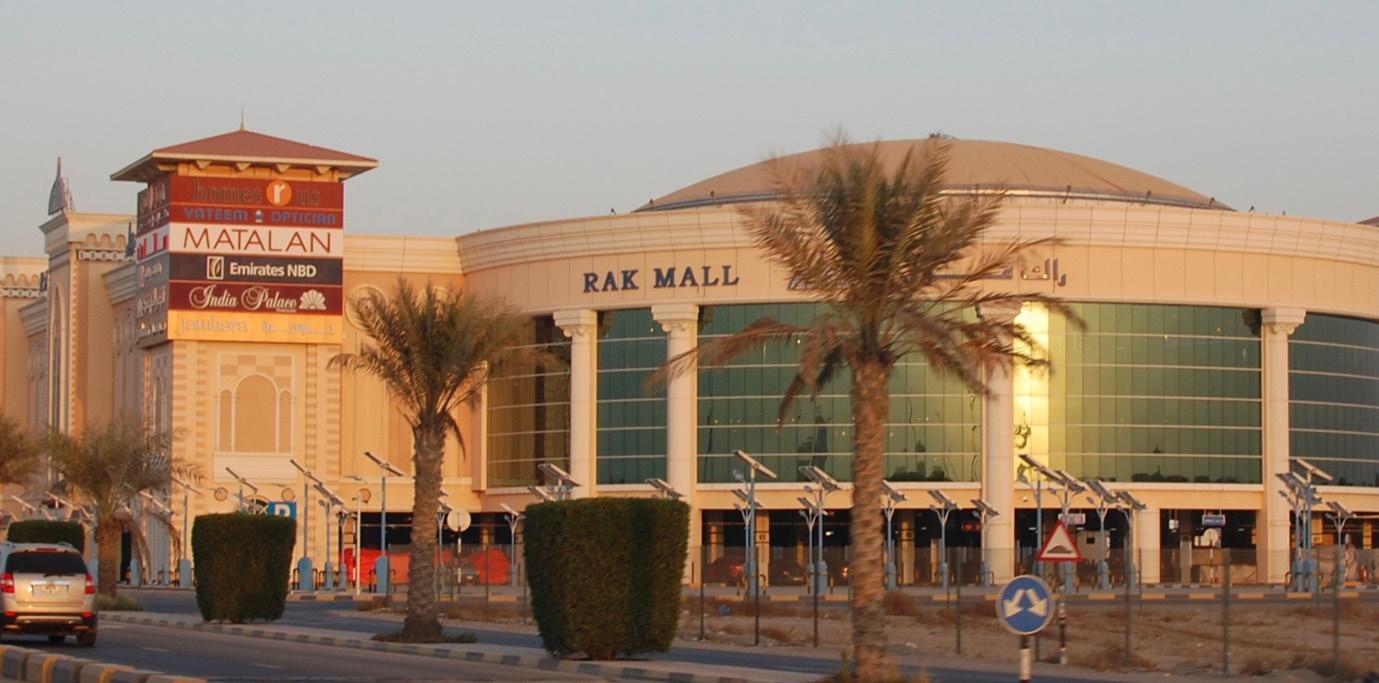
The Civil Defence team was immediately dispatched to the location, and along with the mall management, the blaze on the roof was brought under control. No casualties were reported, and
In January, the 24th Intersec took place at Dubai World Trade Centre with attendees gathering from over 131 countries for the Middle East’s leading trade fair for fire protection, safety and security.
Around 80% of the 850 exhibitors travelled from outside the region from the USA, Australia, Europe and Asia to join their Middle Eastern colleagues. Delegates were treated to a showcase of technology, systems and products.
This year’s Intersec gathering is thought to have been one and a half times larger than the 2022 event.
the authorities ensured the health and safety of all tenants and shoppers were the top priority. In a statement, the mall management said: "Following a small fire that took place on the roof of the RAK Mall, Line Investments & Property confirm that the mall management took all necessary precautions to contain the fire with no causalities and that the mall is back to normal operations."

The Sheraton Abu Dhabi Hotel and Resort has gained five different certifications, based on the Intertek Cristal standards of health and safety, hygiene, water safety and food safety requirements.
Sheraton Abu Dhabi Hotel and Resort, which is classified as a historic building in Abu Dhabi while also offering a modern luxury experience, partnered with Intertek Cristal to establish proactive risk management systems that ensure the safety and wellbeing of its guests, visitors, and employees.
Famously known for its Abu Dhabi Corniche location and restaurants, Sheraton Abu Dhabi Hotel and Resort’s certification initiative helped the management identify health and safetyrelated risks, and assisted it in effectively planning, prioritising, and managing the property’s protocols across its
operations. From room cleanliness to food hygiene, water supply, and pool and fire safety systems, Intertek worked closely with the management team to implement best practices across all of these functions.
Vina del Mar in the Valparaiso region of Chile was placed under a state of emergency after 400 homes were damaged and 2 people died in a huge forest fire spread to the town. Strong gusts of wind up to 50 kph spread the fire from the upper areas of town down into the valley to the lowest and most
Delhi Fire Services (DFS) is launching “fire control room (FCR)” vehicles, which will be smaller than the usual fire tenders, but help shrink response time, senior DFS officials say. The idea is to have them placed in strategic locations around the capital, much like the Police Control Room (PCR) vans of the Delhi police force. Delhi Governments’ Home Departments are looking to buy 50 vehicles, with the possibility of this expanding to 200 if the initial project proves successful.
A team of 20 firefighters have responded to a burning wind turbine in New South Wales, Australia. The unusual call out saw the team ensuring that no other fires were sparked around the wind turbine which could have added to the country’s on-going struggle with grass and bush fires. The wind farm owners EDL are investigating the cause of the fire.
densely populated sections of the city. Several neighbourhoods and one informal settlement were put under evacuation orders, and over 125 hectares of land were burnt. 400 firefighters and 150 forest rangers fought the fire alongside several units from the Santiago metropolitan area.
A huge fire in the skyscraper, which will be the new home of the HongKong Mariners Club and is still under construction, in the heart of Hong-Kong saw over 170 people evacuated from the surrounding shopping area. The fire engulfed several of the upper floors, with falling debris, including bamboo scaffolding, sparking smaller fires nearby. Keung Sai-ming, Hong Kong's deputy chief fire officer, told reporters that 250 firefighters and rescue workers battled the blaze for the entire night.
Two pilots have died after their military planes collided mid-air before crashing into a fireball on a residential street in Rome. The pilots of the U-208 aircraft, part of the to the Air Forces' 60th wing, were reportedly killed instantly after the tragic collision. They had been flying over Guidonia Montecelio as part of a preplanned training exercise.
One of the aircraft in the horrifying collision smashed into a parked car on the street after it plummeted to the ground, before quickly bursting into flames.
The inferno burned between two buildings, forcing the local area to be evacuated.
A fire in an unregistered home for the elderly in the Siberian city of Kemerovo has killed 22 people. Fire safety officials have reported that the entire second floor of the building had been engulfed before the fire was brought under control. Reports indicate that a faulty boiler may have been the cause. Unregistered care homes are considered private property and are not subject to fire inspections, according to local fire service officials.
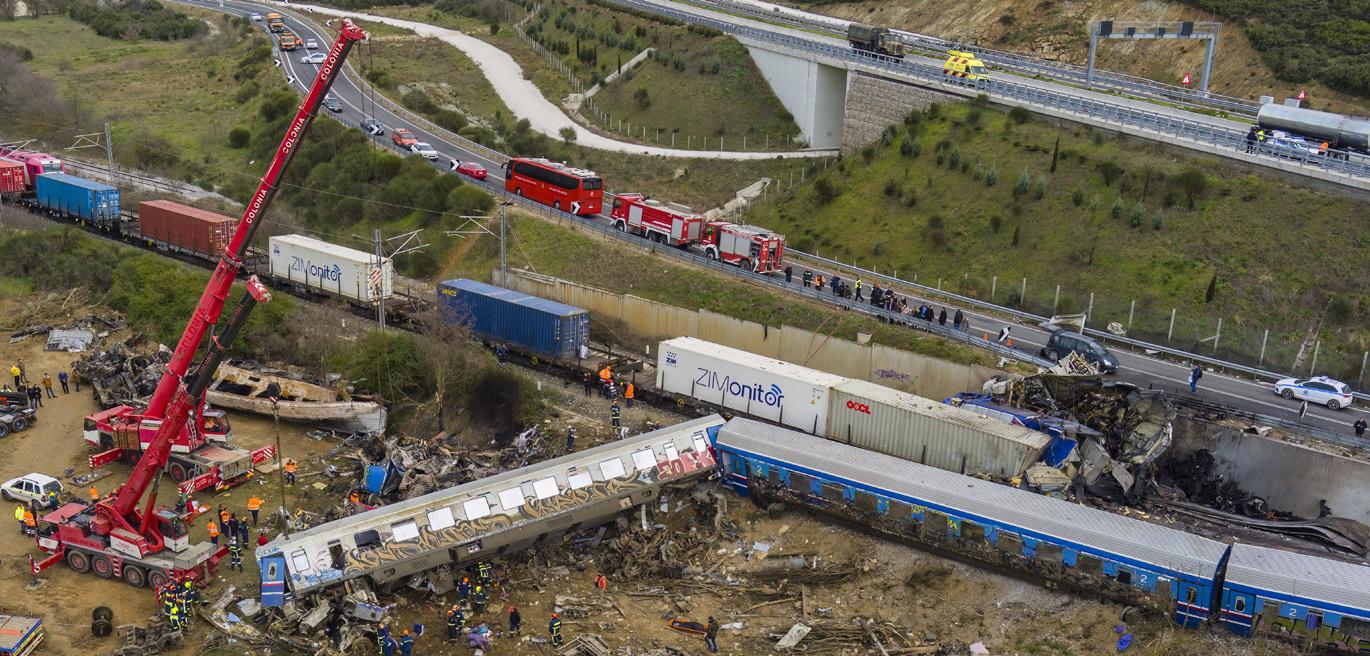
New infrastructure projects and operational vehicles for the Ghana National Fire Service and Fire Academy including a new dormitory, classrooms and dining hall block have been commissioned along with two hydraulic platforms and a rapid intervention vehicle for the operational use of the fire service.
Fire crews in Ontario have rescued workers from the 25th floor of a building site after a floor collapsed during a concrete pour. Crews had to use the construction site elevator to the 19th floor, then foot the 25th
Portugal has applied for more aerial assistance in fighting summer wildfires from the EU. The application was announced during a seminar on the 2022 rural fire season, which the European Commissioner for Crisis Management, Janez Lenarčič, also participated. Portugal is also still eligible to receive one of the four pre-positioning centres for air, land and
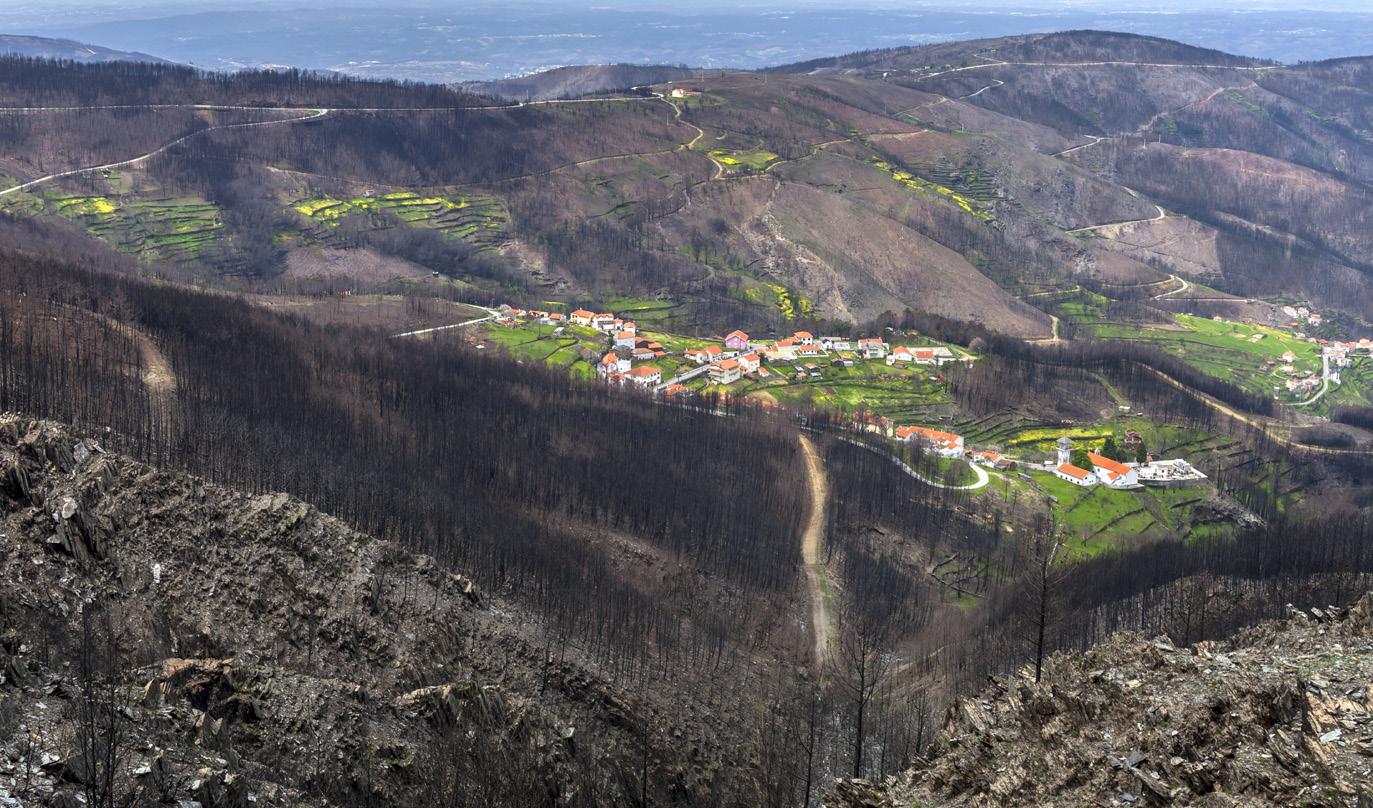

It’s the 21st Century; it’s about time flow testing equipment got with the times. Smart Monster has done exactly that. The first fully digital flow testing equipment allows you to test remotely, showing you your readings in real time on your personal device, and saving all your results to the cloud. To put it another way: it’s flow testing smarter, not harder.


Visit Hosemonster.com to learn more!

President Joe Biden made history on 6th March 2023 when he addressed hundreds of International Association Fire Fighters’ members at the 2023 Alfred K. Whitehead Legislative Conference. It was the first time in 25 years that a sitting US president has spoken at an IAFF conference.


In his keynote speech President Joe Biden reflected that in 1972, and just started in politics, the State Firefighters Association were the first group to really jump behind him. Whilst respecting their bravery Biden made light of firefighters with the words “God made man then he made a few firefighters because you’re all nuts”.
“You’re the only ones that run into the flames everybody runs away from. The overwhelming human instinct is to run away from danger but when the bell rings you run toward it no matter what. Folks know you put on that helmet; and you put on that gear; you jump in the back of that truck; you do what you do and you do it well.”
He also acknowledged his local fire company who drove an incapacitated Biden through a snowstorm to receive life saving brain surgery when not even Marine One could reach him. The fire service also rescued his two sons after a tragic incident with a tractor trailer which killed his wife and daughter.
Biden went onto recall that the fire service has also rescued his wife and the family cat and his beloved 67 Corvette when his home caught fire, having been struck by lightning.
Turning to less personal fire incidents Biden went on: “As president I saw first hand the devastating wildfires that burned homes and businesses from New Mexico to Colorado and California to Idaho. There were firefighters many of whom have never trained to fight wildfires saving lives and risking their own. They brought boats and rescue equipment after hurricanes in Florida, Puerto Rico, New Jersey and New York and Louisiana, rescuing families from ruined homes, ferrying people and pets to safety. At all of these disasters there were firefighters helping out while their own homes were burning or damaged.
On a more serious note Biden reflected that he had attended more firefighter funerals than he wanted to acknowledge… in 2022 there were 99 line of duty deaths.
He went on “I know too many of you are dealing with cancer from chemicals and toxins on the job and in your gear - it’s wrong. I’m going to push through changes - I promise you. You’ve had my back and I’ll have yours”.
When in the Senate, Biden fought to create the safer grant programme and as vice president doubled this funding and once in office as President, invested 350 billion dollars from the American Rescue plan to help states and cities keep firefighters on the job during the pandemic.
Legislation has also increased Federal firefighting grants by 300 million dollars paying for Emergency Response vehicles and thousands of sets of turnout gear. Critical cancer research is also in his sights as well as modernising standards, recognising new hazards and ensuring protective equipment does its job.
Continuing with the theme of the health and welfare of firefighters, Biden spoke of his determination to bring together every part of the government to cut the cancer death rates in half and
invest in research and development and early detection and better screening. He also recognised the need to take action against toxic exposure to PFAS –so called forever chemicals in firefighters’ gear, equipment and fire supervision agents. To this end Biden has met with major cancer research facilities around the world and believes that heart problems, lung disease and cancers associated with firefighters can be beaten.
Biden went on to announce significant funding for Community resilience to wildfire cleaning clearing trees and brush, the creation of fire buffers in high risk areas and to harness new tools to keep communities safe including advancing satellite technology.
Problems with infrastructure has forced the rebuilding and reinforcing of water mains as too often firefighters are showing up and “guess what no water is coming out of that hydrant”. The repair of roads and bridges is also in the President’s focus to ensure emergency responders are not delayed by broken bridges and other highway issues.
Biden finished with the words “There’s no better sight in the world than a firefighter ready to go to work so thank you for being who you are”… Words I think we would all agree with.
For more information please visit:
PINCROFT.co.uk
IN OUR HANDS

Aerolite One, the advanced single seat liferaft (SSLR) from global Survival Technology solutions provider Survitec, has received official US Navy designation LRU-38/P for use on F/A-18 Super Hornet and T-45 Goshawk aircraft.

Specifically developed to meet the evolving needs of fast jet pilots, Aerolite One’s compact and lightweight design creates additional space for critical mission-specific survival aids in the pilot’s personal survival pack (PSP).
MAHLE Powertrain is working with White Motorcycle Concepts (WMC) to develop a fully electric three-wheeled motorcycle perfectly suited to the requirements of emergency first responders, police and last-mile delivery fleets.
Supported by a grant from the Niche Vehicle Network, supported by the Department for Transport and Innovate UK, the project will adapt the design of the Yamaha Tricity 300 to replace its combustion engine with a fully electric powertrain with fastcharging capability and a targeted 100 mile operating range.
This development will enable emergency services to comply with forthcoming legislation and achieve their net-zero ambitions without sacrificing service levels.
The Chinese state owned aerospace company AVIC is developing an aircraft especially for rescue missions. Codenamed Kunlong, or "water dragon" in Chinese, the AG600 aircraft family is developed as vital aeronautical equipment to strengthen China's emergency rescue capabilities. It can be used in combatting forest fires, maritime search and rescue, and other critical rescue missions.
During a comprehensive testing programme, physical and laboratory trials verified Aerolite One’s resistance to thermal shock, explosive decompression, acceleration, vibration, high and low pressures and temperatures, saltwater corrosion, accelerated ageing and performance in heavy seas.
This development is expected to lead to a wider take up of Aerolite One as a significantly improved replacement for existing single seat liferafts in fast jets, rotary wing aircraft and many other applications.”
InterDam, a provider of prefabricated fire and blast resistant architectural items for modular offsite projects and Roxtec, a supplier of modular-based cable and pipe seals, have been working together on research and development which has resulted in a test and pre-certification process that benefits all in the rapidly growing modular offsite business. Both companies have a similar professional approach delivering a complete set of high-quality products to different industries, including sectors that speed up the green energy transition, such as offshore wind power and green hydrogen.
By testing their fire walls with Roxtec fire rated seals installed at the Roxtec fire test laboratory in Sweden, InterDam can fine-tune their product development and pave the way for the certification process.
Defence giant Lockheed Martin are looking to build the wildfire control market in the USA. Collaborating with the Pentagon, on a wide range of military assets in a wildfire emergency to “detect wildfires, notify authorities, and create products to disseminate to firefighting networks nationwide could directly feed into Lockheed-built National Guard C-130 Hercules water bombers, offering pilots and firefighters managing air traffic over the fire zone near-real-time navigation and targeting solutions. Lockheed Martin has the potential to develop a whole suite of tools to help prevent wildfires, and market them on a national level.
The Cyprus based designer and manufacturer of aerosol fire suppression systems, FirePro, has been acquired by Halma, broadening the range of fire safety technologies within Halma’s Safety sector.
The acquisition is part of Halma’s growth strategy to acquire businesses aligned with its purpose of growing a safer, cleaner, healthier future for everyone every day. Halma has completed a total of seven acquisitions so far this financial year.
Taught by 12 expert instructors with backgrounds across all areas of fire protection engineering, the SFPE PE Exam Review Course leverages the deep knowledge from SFPE’s member community to prepare candidates for the PE Exam in Fire Protection Engineering. All courses are live, online, and conveniently offered twice weekly beginning in June 2023, with recorded sessions available on-demand afterward. Additional review sessions, online discussions, practice problems, and office hours with the instructors are included – providing the comprehensive preparation needed to head into the exam with confidence.

After considerable research and development Metalline, a fabricator of specialist architectural metalwork in the UK, has created a fire detection system that could be retrofitted into existing cladding with the intention of giving a faster reaction time than waking watch. The fire detection system is designed to monitor the façade using three different sensors on the cladding system – a smoke sensor in the cavity, a heat sensor in the cavity, and a heat sensor on the outside.
The Kia Sportage is the latest recruit to join Mid and West Wales Fire and Rescue Service which is responsible for providing public safety information, prevention and protection programmes, and emergency response for mid and west Wales, covering nearly 12,000 square kilometres.

The latest fifth-generation Kia Sportage is the first generation to offer hybrid and plug-in hybrid options thus demonstrates the Service's to reducing its environmental impact by expanding the use of Ultra-Low Emission Vehicles (ULEVs) wherever possible and this initiative is part of the Service's broader objective to work towards Net Zero Carbon Status by 2030."
The vehicles are all eye-catching infra-red paint and have been fitted with emergency lighting and siren systems, as well as full conspicuity markings. Four of the five new ULEVs have been incorporated into the Service’s training fleet, which will assist with ongoing emergency response driver training.
To investigate the response time of these sensors, Metalline approached the FPA to design and carry out a bespoke fire test to assess the performance of the system, examine how best to monitor the system and the spread of smoke, and establish how to insert the sensor into the cladding system without compromising the integrity of the system. The testing was carried out on a specially constructed 10m wide and 9m high test rig at the FPA’s facilities to assess the detector response times across two 4.5m storeys, with detectors located at the edge of cavities.
The worst-case scenario for a fire is with the most combustible cladding. However, the worst-case scenario for fire detector response time is with the least combustible cladding. Therefore, the majority of the test rig was constructed with non-combustible aluminium with mineral wool insulation. 5 ACM panels were used in the bottom left-hand corner of the test rig to serve as the main fuel source to assess the detector response times.
Two types of sensors were installed in each test location: a heat detector and a smoke detector, with the majority installed to detect inside the cavity between the aluminium and the mineral wool, positioned on the internal face of the cladding. An additional sensor was
positioned externally above the fire and an A2-rated fire-protected sealant was used to seal the holes made to place the sensors. Two tests were conducted on the test rig, with a fire positioned in one corner to assess the fire detector response times. The sensor activation times were measured relative to when the fire broke through the cavity. The test as designed defined cavity breakthrough as when either of the cavity thermocouples read 200°C above the ambient temperature for over 30 seconds.
The smoke detectors simulating a 10m wide cavity activated before the fire the broke into the cavity, whilst the smoke detectors simulating a 20m wide cavity activated within 1 minute and 5 seconds of fire breaking into the cavity.
The heat detectors simulating a 10m wide cavity activated within 2 minutes and 21 seconds of fire breaking into the cavity. The heat detectors simulating a 20m wide cavity did not all activate before the test was terminated, 15 minutes after the fire was ignited. However, the first detector located on the upper floor activated within 1 minute and 50 seconds of fire breaking into the cavity for both tests.
The external heat detector reacted more slowly than the corresponding internal heat detector during both tests, despite being closer to the fire.
Ryan Brough, Head of Operations at Intelliclad said: "The test results proved the reliability of our application and allowed us to go on and win two national awards: Innovation of the Year at the National Building and Construction Awards 2022, and Smart Technology of the Year at the London Construction Awards 2022.”
When Dubai boldly launched itself as a shopping destination in the 1990s, few expected that the city would soon rival Milan, Paris or New York – but 30 years on, it has helped catalyse an architectural and cultural revolution across the Middle East. Now as the region’s capitals compete to see who can build the most spectacular mall, DOMINIC JEFF , Technical Writer, Securiton details the advanced devices and methods that can help protect these fabulous venues.
since shopping malls have become vast and embraced ever more ambitious sports and entertainment projects within them, fire safety has become a huge and complex challenge. These modern architectural masterpieces, which are springing up across the Middle East, are also among the most prestigious and interesting projects that fire safety professionals can hope to work on. With the trend for ever more spectacular and complex destination malls showing no sign of slowing, they are also a
growth area for those able to build powerful, smart detection systems that can provide owners and insurers with peace of mind.
Invariably given the inherent uniqueness of every destination building and the impossibility of regulations keeping pace with economic and architectural ambitions, designing these systems will involve Performance-Based Design that goes beyond codes and standards in order to provide suitable protection to all concerned.
Spectacular destinations such as the Mall of the Emirates, Dubai Mall and Riyadh’s Kingdom Centre and Tower invariably play with the power of space, and this is at the core of the fire detection problem that must be surmounted. Their soaring atria and cavernous halls provide a suitable sense of opulence and awe, while also being highly flexible in combining boutique shopping with gastronomy and entertainment on a grand scale. Increasingly, sports facilities and large-scale entertainment venues are also attached or built into shopping venues, while beyond the Instagram-friendly architecture a network of car parks, cable ducts, utility tunnels, power and data hubs hide further fire hazards in often hard to access areas.
These complexes regularly host thousands of visitors and staff at peak times, who would all need to be safely evacuated should a fire take hold. Additionally, leading malls are now such

an international draw that they are increasingly being built to include accommodation. This significantly multiplies both fire risks, and the challenges of evacuation. Alarming early is therefore essential in order to react with measured increments and prevent a panic, but, while fire detection can be difficult in such complex environments, it is equally important to avoid false alarms. Only the combined use of advanced detection methods, with suitable networking and combined with well-trained staff, will satisfy all of these requirements.
One of the primary fire safety concerns for large open spaces and open plan areas within buildings is the potential for rapid spread of fire and smoke. In cases of open spaces between floors or with large vertical openings, a fire on a single floor can cause fire and smoke to spread upwards throughout the building very quickly. This is particularly true of flexible spaces such as malls, where typically a series of individual shops are located on different levels, connected by the open space of the main covered public area. It is equally typical of hotels with soaring atria and mezzanines.
Another fire safety challenge is the need for safe evacuation of large numbers of people through designated egress routes. Early alarm is therefore paramount to both life and building safety when it comes to large open spaces. Fire detection is not only essential to provide a reliable alarm for evacuation, but also to trigger other consequential events or actions: these range from power-down processes to the control of emergency lighting and smoke management systems, and the actuation of a sprinkler or other suppression system.
However, although early detection is required, a key problem with fire detection in large spaces is their potential for smoke stratification and dilution. In spaces with high ceilings, the smoke plume from an incipient fire will mix with vast amounts of additional cooler air as it rises, and this will alter its buoyancy and temperature. This phenomenon means the time required for smoke to reach sufficient density to trigger an alarm can be affected significantly. Indeed, stratification effects can mean that smoke will not reach detectors placed under the ceiling at all. Additionally, shopping malls in the Middle East are invariably air-conditioned. In ambient-controlled environments, higher airflow will also dilute and dissipate smoke quickly. The time required for a smoke detector to activate will depend on how sensitive it is and where the sampling points are located, which requires careful planning and potentially testing in real-world scenarios, given that each of these major buildings will be unique in both layout and airflow. Even smaller regional malls are rarely
built to a standard design, as ‘uniqueness’ is part of the draw to discerning shoppers and tourists.


Fire and building codes continue to evolve but cannot hope to keep up with the pace of architectural ambition or the sheer variety of the venues and entertainment being dreamed up to entice tourists to the Middle East. This is especially so given that the Arabian peninsula in particular has very rapidly evolved from a region that could afford to adapt standards from other nations, into one that leads the way in the buildings it approves and constructs. This forces fire safety professionals into a fundamental shift from the traditional prescriptive Deem-to-Satisfy design based on regulations, to risk-informed and Performance-based Design (PBD). Consider, for example, the upcoming Meydan One Mall: options include an electric go-karting track, an e-gaming zone and designated areas for extreme sports. It will feature areas as diverse and unusual as a 1-kilometre indoor ski slope and a gigantic ‘crystal lagoon’ with a 500 metre beach. While neither of these is a high fire hazard in itself, they are areas where hundreds of guests will congregate, with airflow links from more conventional fire sources such as restaurant kitchens.
In these complex and unique environments, qquantitative risk assessment requires the same smoke detection system to not only provide early warning and alarm in various fire scenarios, but also to work reliably in different building geometries or changing ambient conditions inside the protected areas. This is particularly true given that many modern malls are designed as multi-use and
require the ability to alter aspects of the internal layout on an occasional basis, in order to accommodate changing needs from leaseholders or additional entertainment extravaganzas.
Advanced designs that offer suitable protection for major shopping malls will likely rely on a variety of advanced fire detection methods. While networked point-type detectors may have their place in the individual shops, cafes or hotel rooms, the aforementioned stratification and dilution issues mean the large open areas will require powerful detection at multiple points at different heights. Aspirating smoke detection is ideal for this use, as the tubing can run vertically with a suitable number of sampling holes along its length.
Aspirating smoke detection (ASD) also offers low visual intrusion, wide coverage, and an ability to reach into areas of difficult access without the need for regular maintenance access. An ASD tubing layout can be designed to cover an atrium or shopping hall across both a horizontal and vertical cross section, while also providing additional detection around smaller units in a way that is straightforward to alter should the space requirements and uses change. Crucially, pre-placed test holes located for easy access allow for testing the entire system effectively. These options are advantages that ASD offers over beam detectors, which are often used to protect atria or domes but cannot function if internal structures block the line of sight – or may block it on occasions or in the future.
Allowing for flexibility of use is likely to be a key demand as mall and entertainment venue operators consider the need to continue offering new elements to keep their appeal fresh in the face of ever increasing competition.
ASD tubing is also an option for protecting cable trenches and trays, and other utility tunnels which will invariably run for kilometres around a large site. However, the longer these become the more cost-effective a linear heat system is likely to become, especially one where a sensor cable or cable with embedded sensors can simply be laid alongside the other pipes, tubes and cables.
Line-type heat detectors are also popular options for the car parking areas attached to almost every major destination building. Many of these systems are designed to be low-maintenance, hardwearing and cost effective. However, consideration must be given to the Middle Eastern climate and the possibility of temperature changes that could trigger a false alarm. Systems with advanced algorithms will be able to tell the difference between naturally rising heat and a real fire, by relying on a combination of rateof-rise and total alarm thresholds rather than just triggering at a given temperature. If the air conditioning in the parking area gives out on a hot day, the last thing mall operators need is a fire alarm to worry about.

When it comes to tackling a fire, the use of a suitable sprinkler system can play a role in addressing fire safety issues in large open spaces for the compliance of relevant building or fire codes. These can be related to the maximum travel distance or whether an atrium floor area is permitted for specific approved uses, or if a glass wall in a large atrium forming a smoke partition is accepted.
Recognising the extreme importance of a suitable smoke management system for large open spaces, codes such as NFPA 92B (incorporated into NFPA 92 since 2011) establish requirements for the design, installation and testing of smoke control systems used to mitigate the impact of smoke from fire. Given the undesirability of triggering these responses unnecessarily, the control of certain elements of a smoke management system with an Early Warning Fire Detection system is both necessary and practical to address the need to maintain tenable conditions during a safe evacuation.
The extraordinary boom in malls and other major destination complexes in the Middle East is currently one of the most exciting and lucrative architectural, construction and facilities management opportunities globally, and looks set to continue in the foreseeable future. For fire safety professionals in the Middle East, this means that their evolving Performance-Based designs for integrated, advanced detection and alarm systems will not only keep visitors safe – they will also move them to the forefront of fire safety thinking globally.


We all see them every day as we travel along various highways; the massive concrete structures that so neatly keep all our online purchases organised and ready for delivery. On the outside, these mammoth buildings all appear quite similar and each stand proud with their box-like appearance. However, on the inside, these facilities can be quite different in the type and scope of the thousands of products and their packaging stored in multi-level automated storage and retrieval systems. In his article, len swantek , Director – Global Regulatory Compliance, Victaulic, takes a closer look at warehouse storage protection from the perspective of Commodity Classification and the critical characteristics that impact the type of sprinklers to be used.
for the fire protection engineer, designing a system to protect a wide range of products and materials is certainly a challenging task. Warehouse facilities can often store just about anything from clothing, household items and automotive products to a multitude of electrical and lithium-ion battery-powered devices. Additionally, the massive cardboard and packaging inventory alone poses a serious fire risk. In fact, according to NFPA statistics in the U.S. fire departments have responded to approximately 1,450 warehouse fires resulting in an average of $283 million in property damage each year. We know that automatic sprinkler systems in warehouses provides some of the best protection, so let’s begin with some basic questions.
When determining what will be stored in a warehouse, the classification of the various commodities needs to be determined. While the commodity is the physical products placed in the racks, the Commodity Classification and the resulting demand on the fire system will also include an evaluation of the packaging and the pallets. There are five basic Commodity Classifications defined in NFPA 13 arranged from the least severe to the most severe: Class I, II, III, IV, and Group A Plastics. The testing and certification agencies have benchmark commodities that are used in fire tests that replicate the burn characteristics of the various Commodity Classifications.

Class I Commodities are typically non-combustible products stored on pallets or in cardboard boxes stacked on pallets or on the floor/shelf. The storage of commodities can also be shrink wrapped. Examples of Class I Commodities include empty glass bottles, gypsum board, or metal products. The benchmark commodity for a Class I product is a steel box placed inside of a corrugated cardboard box stacked on a wooden pallet. The steel box represents a noncombustible product. This arrangement will represent the heat release rate of a noncombustible Class I Commodity during a fire test.
Class II Commodities are also non-combustible products, however in this case, the packaging is more substantial than Class I packaging and includes slatted wood crates, solid wood boxes, multiple-layered corrugated boxes with or without pallets. An example of a Class II Commodity would be empty glass bottles stored in wooden crates. The benchmark commodity for a Class II product is a steel box placed inside of a tri-wall corrugated cardboard box which is then placed inside of another tri-wall corrugated cardboard box stacked on a wooden pallet. The two tri-wall corrugated boxes represent substantial packaging. This arrangement will represent the heat release rate of a Class II Commodity during a fire test. Fires involving Class I and Class II non-combustible commodities typically are a result of the burning of the cardboard packaging and the wooden pallets.
Class III Commodities are combustible products stored on pallets or in cardboard boxes stacked on pallets or on the floor/ shelf. The product may be constructed of wood, paper, natural fibers, or Group C plastics with or without pallets. Class III Commodities are allowed to contain a limited amount of plastic (5% or less by weight of non-expanded plastic or 5% or less by volume of expanded plastic). Examples of Class III Commodities include furniture, paper, or wood products.
The benchmark commodity for a Class III product includes all paper cups with single layer cardboard dividers placed inside of a corrugated cardboard box stacked on a wooden pallet. The paper cups represent a combustible product. This arrangement will represent the heat release rate of the combustible Class III Commodity during a fire test.

Class IV Commodities are also combustible products with an appreciable amount of plastic (5-15% by weight or 5-25% by volume) and meets one of the following criteria:
1. Consists entirely of Group A plastics or is entirely or partially made of Group B plastics.
2. Boxed or in a wood container that contains 5-15% by weight of Group A non-expanded plastics
3. Boxed or in a wood container that contains 5-25% by volume of expanded Group A plastics
4. Boxed or in a wood container that contains a combination of Group A expanded and non-expanded plastics.
5. Exposed and contains 5-15% by weight of Group A nonexpanded plastics
6. Exposed and contains a combination of Group A expanded and non-expanded plastics.
The benchmark commodity for a Class IV product includes a combination of 75% paper cups and 25% plastic cups with single layer cardboard dividers placed inside of a corrugated cardboard box stacked on a wooden pallet. The paper cups represent a combustible product, and the plastic cups represent an appreciable amount of plastic. This arrangement will represent the heat release rate of a combustible Class IV Commodity during a fire test.
Plastic Commodities are classified as Group A, B, or C Plastics. Group A plastics (i.e., Acrylic, Butyl Rubber, EPDM Rubber, Natural expanded Rubber, Polyethylene and Polystyrene) are in a Commodity Classification by themselves. Group A plastics are also either expanded (i.e., Styrofoam) or nonexpanded (i.e., solid plastic parts). Fires involving Group A expanded plastics are some of the most challenging to control. Group B plastics (i.e., Cellulosic, Natural nonexpanded Rubber, Nylon and Silicone Rubber) are considered Class IV Commodities. Group C plastics (i.e., PTFE, PVC, PVDC, PVDF, melamine, phenolic and urea formaldehyde) are considered Class III Commodities.
The benchmark commodity for a nonexpanded Group A plastic commodity includes all plastic cups with single layer cardboard dividers placed inside of a corrugated cardboard box
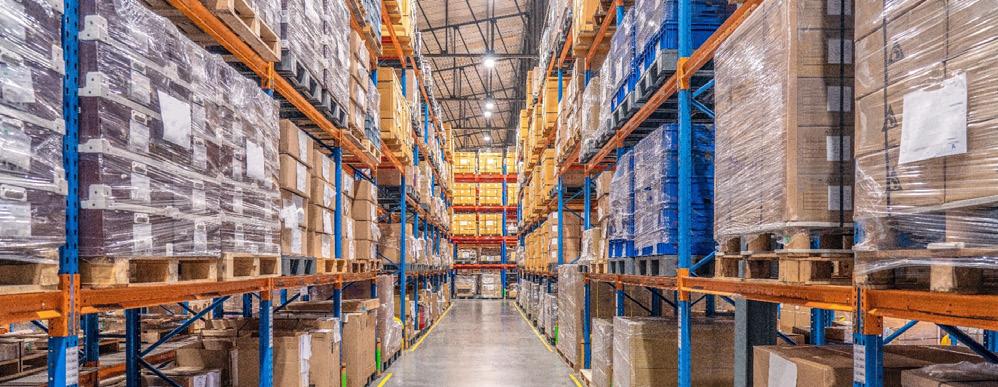
stacked on a wooden pallet. The benchmark commodity for an expanded Group A plastic includes Styrofoam with plastic shrink wrap. These arrangements will represent the heat release rate of the various Group A plastic commodities during a fire test. For reference, NFPA 13 provides a complete list of the Group A, B, and C plastics.
Plastic pallets are often used in lieu of wooden pallets. If plastic pallets are used, the Commodity Classification is increased to represent the higher heat release rate from the fire. Plastic pallets can also have steel reinforcing rods placed inside for rigidity. If a plastic pallet is reinforced, then the Commodity Classification is increased by two classifications (i.e., a Class II Commodity will increase to a Class IV Commodity). If a plastic pallet is not reinforced, then the Commodity Classification is only increased by one classification (i.e., a Class II Commodity will increase to a Class III Commodity). Since the benchmark commodities are all tested by the regulatory agencies using wooden pallets, then the plastic pallet Commodity Classification increases will represent the heat release rate of these commodities on plastic pallets during a fire. In some warehouses, plastic pallets are special ordered with a fire-retardant chemical formulated into the plastic. In this case, these fire-retardant plastic pallets burn like wooden pallets and there is no increase in the Commodity Classification. Reinforced and fire-retardant pallets must be provided with markings indicating as such. NFPA 13 also provides requirements for idle pallets. Idle pallet is the term used for pallets that are stored when not in use. These stored idle pallets represent an additional fire load in the warehouse, therefore NFPA 13 requires that they be stored external to the building. If they must be stored inside the warehouse, the size of the idle pallet pile is limited.
If a product is not classified, it can be evaluated by a nationally recognized testing agency to determine the Commodity Classification. This includes three separate fire tests of 8 pallet loads of the commodity (24 pallet loads in total). The burn characteristics of the unknown commodity is then compared to the heat release rate of the benchmark commodities to determine the specific Commodity Classification.
NFPA 13 recognises two basic storage arrangements: rack storage and all other types of storage arrangements. Rack storage
arrangements are common in automated warehouses today. Products are placed on pallets and then placed on the rack supports. Racks can be single row racks up to 1.8 metres (6 feet) in width, double row racks up to 3.7 metres (12 feet) in width, or multi row racks over 3.7 metres (12 feet) in width. If the aisle width between the racks is less than 1 metre (3.5 feet), then a single row rack is considered a double row rack and a double row rack is considered a multi row rack.
The sprinkler installation rules for rack storage are typically organised for racks under 7.6 meters (25 feet) or over 7.6 meters in height. When the racks get very tall or will hold a more combustible commodity, it is common to install in-rack sprinklers to control the fire. In-rack sprinklers are typically installed in the intersecting gaps (flue spaces) between the rack rows and the pallet loads.
Storage arrangements other than rack storage includes solid piles, palletised, shelves, or bin boxes. These types of storage arrangements typically do not have large gaps between the boxes or pallets. Because they are typically stacked on top of each other, their storage height is limited. Solid piles include boxes stacked on top of each other directly on the floor and palletized storage is often stacked on the floor with additional pallet loads stacked on top. Shelf storage arrangements are 0.76 metre (30 inches) wide and can also include back-to-back shelf storage up to 1.5 metres (5 feet) wide.
The storage height is measured to the top of the storage rack frame or to the top of the solid pile or shelves. The height of the building is measured from the floor to the underside of the roof deck/ceiling. These measurements will determine the appropriate installations rules to be followed in NFPA 13.
The greater the ceiling and rack storage height, the more challenging it is for the sprinkler system to deliver the needed water to all levels of the storage system. Densely packed shelves can also create a barrier that prevents water from reaching the fire inboard and at lower-level shelving. Large K-factor sprinklers are utilised to force extinguishing water down through the flue spaces while wetting the surrounding commodity to prevent fire spread.
Full-scale fire simulations are routinely conducted by UL LLC and FM Approvals for the qualification of each sprinkler model and type to ensure there is sufficient water delivery to control the fire. Once the building design and storage arrangement is known, the designer can then begin to select from various types of sprinklers to be considered: Early Suppression Fast Response (ESFR), Control Mode Density Area (CMDA), or Control Mode Specific Application (CMSA), to ensure the appropriate level of protection.
As warehouses and the ever-increasing number of products and storage arrangements continue to evolve, so will the standards that govern these applications. With the help of industry expertise like NFPA and the certifying agencies, sprinkler manufacturers will also continue to develop new products that will meet the growing challenges of warehouse storage protection.

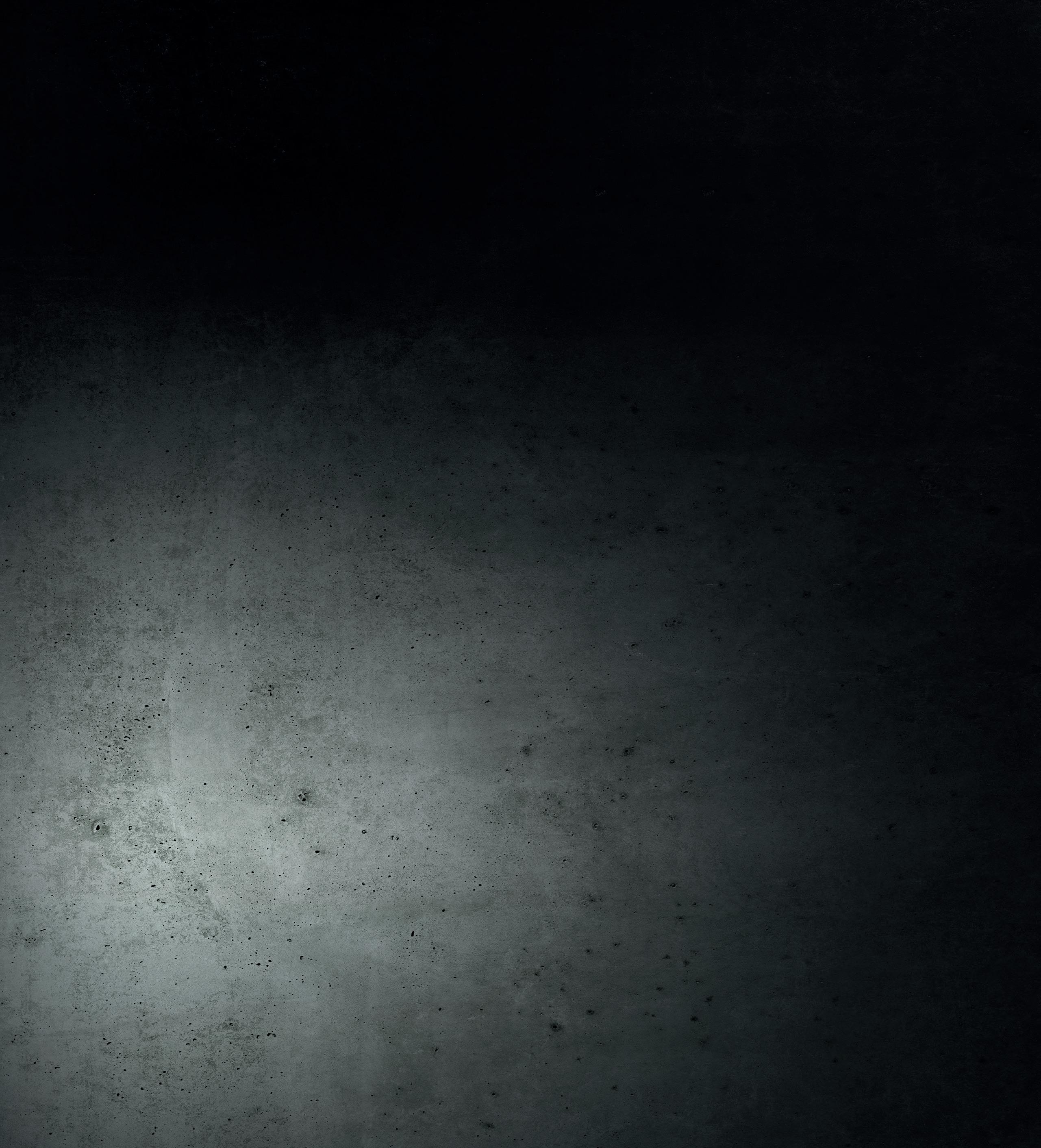






During 2022 FIRE Middle East featured a series written by abhishek chhabra , Market Development Manager, Thomas Bell-Wright Consultants introducing compliance in passive fire protection. This year, he will continue to build on the same, aiming to act as a guide to managers and leaders alike.
if watching the videos of NEOM in the Kingdom of Saudi Arabia and looking at how they are drawing ‘The Line’ is getting you excited, then you need to take a couple of steps back to see the bigger picture. The era of giga-projects is what will define the region’s construction in the coming years. As engineers and architects across businesses are scuttling to work on longer on the ‘design-phase’ of projects, this is an opportune time for industry to take a better look into how (fire) compliance gets implemented.
As the UAE, who revised the Fire & Life Safety Code of practice in 2018, is considering some revisions, the Saudi Building Code which continues to drive regulatory framework decisions will also evolve in the next couple of years. While the exact boundaries of acceptance criteria may evolve, the compliance regime will always becoming stricter over time. Before delving into implementation systems let us understand the driving force behind the need for ‘Compliance’.

Fire accidents are known to occur. Humanity has all too frequently suffered and witnessed loss of life and property. We have also realised how the future changes when a fire accident happens. And one of the big shifts is the change in understanding of what was considered safe.
There is also (re)defining and (re)quantifying what is unsafe and how in the future, deterrents are redefined. These drive what was mentioned earlier, “evolving boundaries of acceptance criteria”. But the real change is driven by the defining deterrents.
As they continue to be redefined there is clearer link being established between what used to be done that can lead to a fire and what should not be done in the Future. Now the main deterrent to drive change in the future is the fear of liability.
Humanity has learnt from the past that when accidents do happen, they are caused by something that someone did (or did not do). This is a potential liability as there will be a repercussion to what someone did or did not do. Such a liability could be a repercussion of a law which is not being abided by; the liability could be a commercial repercussion which could be measured in money or fines and the potential loss of reputation too has a value attached… Often commercial.
Standards and codes are used to define performance levels to create the boundaries used to set liability. To better understand how the impact on individuals and businesses is realised we need to get a quick overview of the relationships between the key stakeholders. This is defined in Image 1.
In a business environment a ‘punishment’ is (usually) either defined contractually (commercial or non-commercial repercussions) or legally (limited, but known options). These are the key deterrents which exist.
Hence means of compliance are the real tools to keep a good check on the performance of products and workmanship which, when it slips, leads to liability.
across the world, it has started to dawn on building owners that façade fire safety is nearly as important as the structural integrity of a building. This is the really starting point which has the potential to change the fate of the façade. The importance it gets. Just like the ‘lobby’ of a hotel or some commercial buildings have a separate budget as it has the potential to create the ‘impact’ for the guest; in the same way, the possible impact of a façade fire needs to create a special attention for the building owner.
As a railway specialist might say… If the ‘engine’ knows where to go the bogies will always fall in line. Keeping in mind the maker-checker format, let us consider the tools available for the stakeholders and how to use them effectively.
What started as the structural load bearing walls more than half a century ago, today is the building envelope. It has become an engineered solution to take over the functions the walls provided: weather barriers (air, water and thermal) along with other like acoustic and “fire safety”.
The building envelope (façade/cladding) has its own set of specialisms: Façade Engineer, Façade Fire Engineer, Façade subcontractor, etc. This gives more room to creativity, engineering, architecture, commerce and of course, errors. An example in Image 2 is one of probably hundreds of possible ways in which a “building envelope system” undertakes almost all the functions which were earlier fulfilled by walls. This shows the spread of possible suppliers and the level of detailing, engineering, and workmanship necessary to deliver what was once done by a single wall system.
Depending on the building type, the cladding could be a minor part of the project or a key element defining the project/ building. Correct implementation starts with the ‘owner’ realising that a risk of fire exists and special attention needs to be given to the building exterior. Luckily, as news of façade fires remain unabated

It is more likely now than in the past, that a façade fire will occur. The consideration of selecting and paying suppliers and service providers should be done based on envisioning the repercussions of an occupied building facing a cladding fire. Apart from evaluating coverage under insurance for a façade fire, the contracts with suppliers and service providers should have provisions which will prevent such a possibility. As well as provisions which define exact liability and scope of actions in case such an event occurs. Striking a balance between wants and budgetary constraints, the owners should keep in mind that the probabilities of façade fires are higher than what they used to be. Relying on the minimum regulations set in by the local government or jurisdiction (which might not be updated) may not be sufficient. The fulfillment in case of an incidence from the local jurisdiction would have limitations. This is less likely to cover the liability on reputation and commercial losses for the property owner. Hence it is recommended to use best known practices as compared with minimum local requirements.
The reputation of a business has a strong link with increasing their clients as well as a strong link with liability. A wrong decision or overlooking a matter that is critical to contract (Promise of Deliverables) will eventually lead to an instance which will lead to reputation loss and eventually loss of business. Here are some of the guiding points for a façade specialist to help minimise their liability on matters related to façade fire safety:

Ensure related members of the (façade) specialist practice know and understand combustible materials. If not, consider engaging a fire specialist and have a contractual route to pass on the liability related to fire risk in contracts
Ensure an updated understanding within the teams about the reaction to fire properties of : ignitability, combustibility, calorific value, flame and smoke spread.
Understand the limitations of test reports. Test reports only prove capability of someone being able to produce a sample for a test. Test reports alone are not proof of what will be supplied.
Understand the tools of certification and listing that provide traceability check on materials. Use this knowledge in specifications and decisions: pre-tender and post tender.
Façades are not materials but systems. Systems designed and implemented often by different commercial entities: Use or call for mock-up testing evidence specific for projects to define and limit liability
Define and link the performance of mock-ups with workmanship.
Define liabilities of stakeholders and your own using standards used to define repeatability (see ISO series in Image 3)
Create estimated liability value based on potential losses possible and list known stakeholders who could err.
Contracts: define, limit, and link your liability using assurance mechanisms of certification & listing and appropriate standards and codes.
Your scope could be both maker and checker. If so, make sure you or your teams are equipped with the training or as sometimes needed, accreditation
In some jurisdictions/codes like the UAE Fire & Life Safety Code and Saudi Building Code have some scope calling for Third Party Accreditation to authorise auditing.
The contractor does what the contract says. And if the contract does not say much then a lot of things could fall into default options. And hence it is important to define important aspects in the contract. And finally a point to note:
Be careful of, aware of and keep track of local minimum requirements that could be handed over as per a legal requirement in the jurisdiction where work is being performed.
As an example Decree 213 in UAE empowers the UAE Fire & Life Safety Code of Practice. This code has a chapter (18) on responsibilities of stakeholder.
In case a contractor is not being allowed to fulfill their obligations technically or commercially, then they need to take it out of the contractual document and pass it on to someone else.
Often, though not always, the contractor gets an approved drawing which needs to be built. Changing anything here or initiating any change brings the ownership of the efficacy of the design back to the changer/ contractor. In case these are not documented, these can become liability.
A key worry for contractors is to maintain the workmanship. This should be addressed using regular trainings and audited regularly
To safeguard the interests, third party independent inspection bodies are used. Sometimes, these are contracted by the main contractors or consultants. But if such inspection bodies are reporting back to the sub-contractor themselves then there is conflict of interest.
Care must be taken to choose a qualified inspection body
FAÇADE MATERIALS/ COMPONENTS SUPPLIERS
Sometimes the supplier ends up taking on more liability than needed. Often tempted by the order and its value. This is dangerous as there are limits to what the material supplier has visibility of. Specifically, on how the material could be used. Below are some of the key points of note for sellers and buyers of façade materials.
A manufacturer or seller of material can only provide assurance of the fire performance of the material alone and not as part of a system property. This should be correctly documented and contracted.
As an example, the calorific value or combustibility classification of a Polyurethane (PU) Foam can be assured. But not how it would behave in a given system with adjacent materials.
In a fast-paced trade environment, keeping the raw material suppliers and manufacturing processes the same is not that easy. This is a challenge for manufacturers, but should be known to buyers correctly as well.
In some jurisdictions like the UAE, the fire code mandates material suppliers to also submit the proof of performance of the façade component materials (Like the facia element- ACP) in a mocked-up system as well. This is done only to establish certain baseline performance. It is the responsibility of other stakeholders in given project to corelate such evidence (Like an NFPA 285 or a BS 8414 test) with that of a given project. Manufacturers should be careful not to sign-up for liability which they cannot assess.

To safeguard the interests, third party independent conformity assessment bodies are used. They independently audit the processes and supply chain control mechanisms along with regularly assessing samples of the products to check for their performance.
An example is the seller of a household split-air conditioning system consisting of an outdoor unit, indoor unit ( supplied by a manufacturer) and some recommended components like connecting cables, pipes etc. The performance assurances of the supplier are only valid if recommended components and an authorised installer are used. Often the warranties are also void if installers other than the ones authorised are used. Similar contractual boundaries should be contracted to define the liability of manufacturers.
Image 3 provides a graphical representation of a typical implementation plan and adds references of international standards used by regulators as well as contractors to bring about parity of performance of third-party assurance providers.
Risk Assessments could be under the contractual scope of Façade Specialist, a fire consultant, a contractor or someone else. And depending on the contract and who is the maker and who is the checker the tools of Testing + Certification & Listing should be correctly called for and used. Responsible contracted stakeholders should correctly understand and use mock-up test reports to asses and quantify risk. Third party inspection increases the assurance and diversifies the liability as well.
A cladding system is an assembled solution which has several stakeholders. In order for the solution to perform as committed, specifically on the fire safety side, it is imperative that there is an alignment of expectation of performance and clearly contracted responsibilities. Correctly worded and referenced standards provide the tools to complete assurance and quantifying liability. The aim is to deter actions that are (now) known to create (fire) risky situations which needed to be avoided.
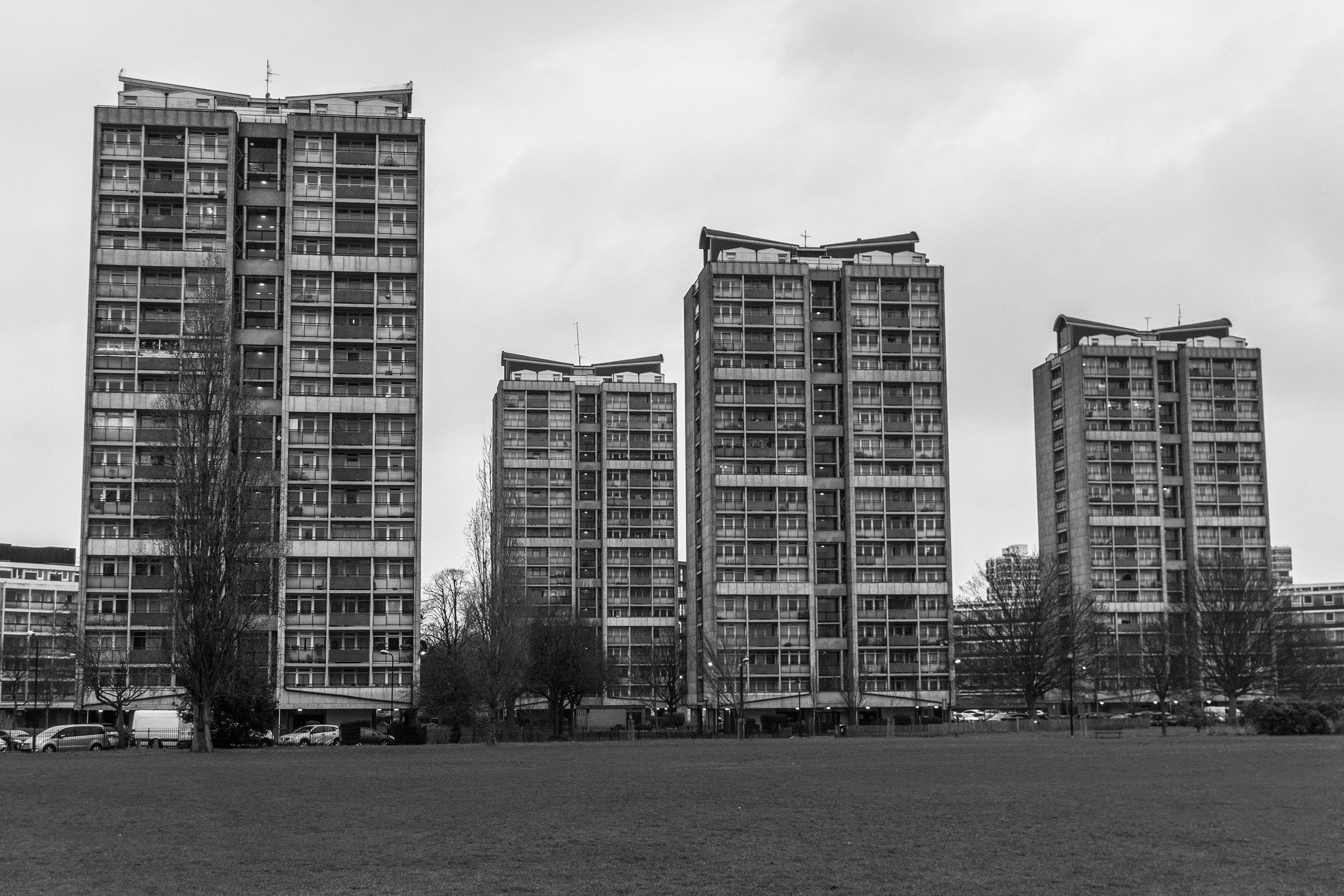
Passive fire protection: fire tests for roof coverings

esther gitau , Testing Technician, Emirates Safety Laboratory (ESL) explains ASTM E108 - a standard test method for evaluating the fire performance of roof coverings which determines the fire characteristics of various roof coverings, including asphalt shingles, tiles, slates, metals, and wood.
this test method evaluates the performance of roofing materials subjected to simulated fire conditions emanating from outside the building. A gas burner and burning brands are used as fire sources. The test provides information about the ability of roofing material to resist ignition, prevent the spread of fire, and maintain its structural integrity during a fire. The tests also evaluate whether the roof coverings will produce flying materials (flying brands) when exposed to simulated winds of 12 mph during the fire tests.
The test method applies to roof coverings intended to be installed over combustible (plywood, wood, OSB) or non-combustible decks (gypsum, metal).
The ASTM E108 test standard comprises six methods:
Intermittent flame exposure test
Spread of flame test
Burning brand test
Flying brand test
Rain test
Weathering test
The test is performed on at least two 4ft-4 in. long by 3ft-4 in. wide test decks. The decks are mounted at an incline specified by the manufacturer. A gas flame from the burner is applied intermittently at specified intervals depending on the intended class rating of the roof covering. The calibrated air supply is maintained throughout the test until all sign of flaming, glowing or smoking over the roof covering and
below the test deck has disappeared or until failure arises.
SPREAD OF FLAME TEST
A minimum of two decks are tested for the spread of flame. The deck length depends on the desired class rating: At least 8 ft for Class A tests, a minimum of 9 ft for Class B tests and 13 ft for Class C tests. The gas flame and air current are applied for 10 min for Class A and B tests and 4 min for Class C tests.
4 ft-4 in. long test decks are mounted at the desired incline, and the calibrated air supply is applied. Four decks are tested for Class A ratings, and two decks for Class B and C ratings. In this test, the gas burner is detached to prevent airflow obstruction to the roof coverings. Class A brands are 12 in. square and 21/4 in. thick, Class B brands are 6 in. square and 21/4 in. thick, and Class C brands are 11/2 in. square and 25/32 in. thick. The brands are ignited for the specified times before their application on the test decks by subjecting them to a gas burner flame of defined flame temperature that envelops them entirely. The tests are run until the brands are fully consumed
and when all indication of smoking, flaming and glowing on the roof covering and below the test deck has wholly disappeared.
A minimum of two decks, 4ft-4 in. long, are tested. The gas flame is applied continuously for 10 min for Class A and B tests and 4 min for Class C tests. A 12-mph air current is maintained until flaming, glowing, and smoking has disappeared from the surface of the roof covering.
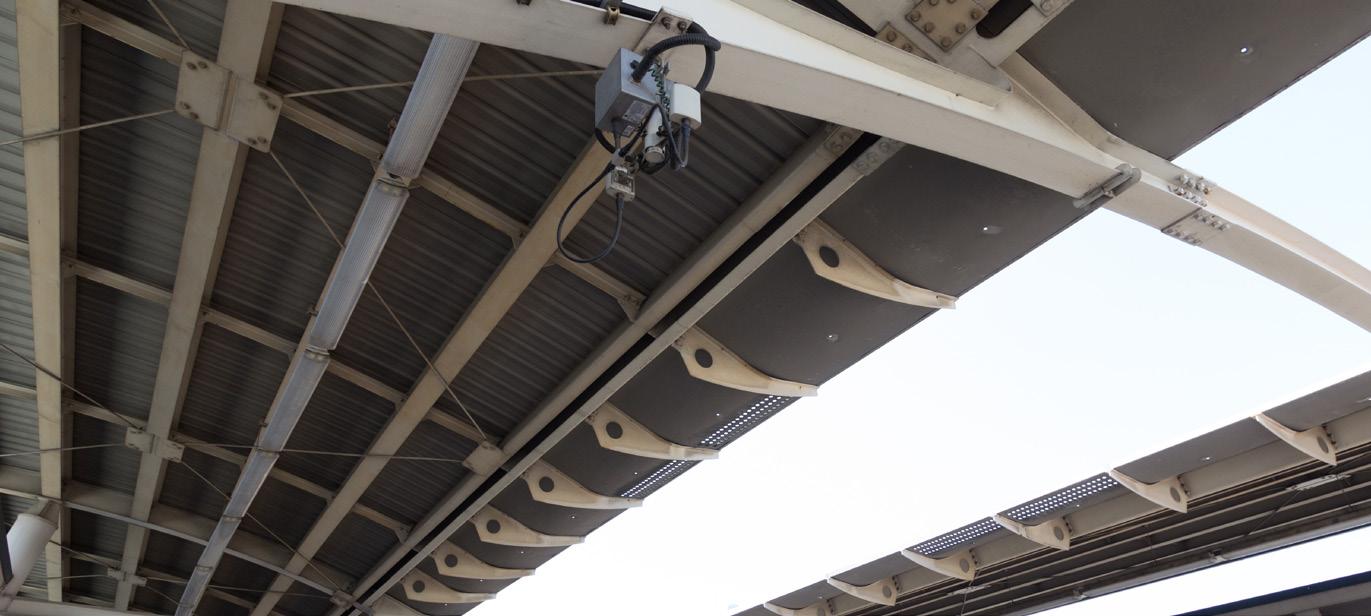
The test is conducted on six decks, 4ft-4 in. long, mounted at an incline of 4 in. per horizontal foot. Spray nozzles are mounted 7 ft above the test decks. The test decks are subjected to 12 1-week cycles, with one cycle comprising 96 hours of water exposure and 72 hours of drying time at 140° F.
The test decks are mounted outdoors and are tested following exposures of 1, 2, 3, 5 and 10 years.
Only the spread of flame test is to be conducted for roof coverings that are expected to be installed solely on non-combustible decks. The test method allows the roof covering materials to be tested when applied on combustible or non-combustible decks of the specified lengths.
When the roof covering is not limited to use on noncombustible tests, the intermittent flame test, spread of flame test and the burning brand test are required.
Flying brand tests are required where there is a likelihood that the roof covering material will break into flaming particles that would support combustion on the floor.
The rain and weathering tests apply to roof covering materials whose fire-retardant properties are expected to be adversely affected by rain or weathering outdoors.
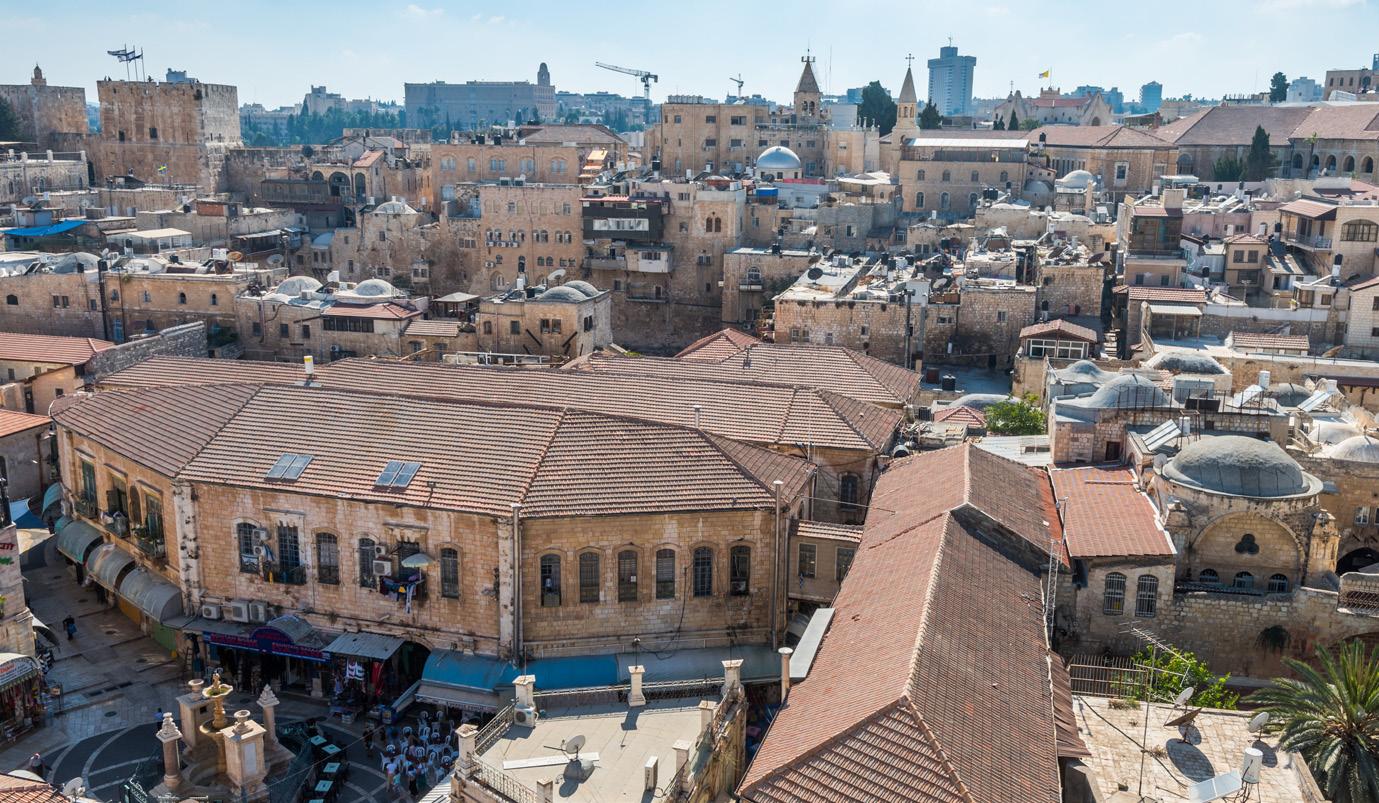

After the tests are completed, the results are evaluated to determine the fire performance of the roof covering material.
The fire performance is based on several factors, including the flame spread, the appearance of flaming on the underside of the test deck, the production of flaming and glowing brands, the dislodgment of portions of the test sample and the ability of the material to maintain its structural integrity during the test.
The flame spread distance is a measure of the distance to which the flaming of the roof covering material has reached. A lower flame spread distance indicates that the material will contribute less to the development of a fire.
The ability of the material to maintain its structural integrity during the test is also evaluated. If the roofing material can retain its structural integrity during the test, it is considered to be better able to resist fire.
The test results indicate whether the roof covering material attains either of the three classifications: Class A, Class B or Class C.

The ASTM E108 test method is suitable for evaluating roof coverings' fire performance properties.
Certification bodies, like Emirates Safety Laboratory (ESL), use this method and the results of testing to this standard when making a certification decision and issuing a certificate of conformity.
The Certificate of Conformities (CoCs) based on the ASTM E108 test method assists manufacturers, project owners, designers, consultants, fabricators, and contractors in making informed decisions about fire safety on project roofing materials.
Smart buildings are on the rise. Modern buildings are becoming increasingly complex and with this, the need for building management systems (BMS) to control the various technologies installed in them will only grow too. Sasi Kumar, Commercial Manager for the Middle East at Advanced explains more.
BMS is a relatively new addition to modern buildings. Just 30 years ago each individual system in a building had to be controlled separately and manually. This evolved into each system being controlled and monitored by a computer. Finally, they were unified into one master control system that networked all the mechanical, electrical, IT, and security systems of a building, sharing information and working together seamlessly.
Integrating all the components into a single cohesive unit means greater efficiency, lowered operating costs, and a safer, more secure, and responsive building environment. It also improves reporting, information management and decision-making with facilitywide insight and control for better performance. Other benefits include more efficient resource deployment which can result in reduced operational costs, empowering operators, simplifying training, and reducing false alarms.
Early BMS were limited to having all the equipment from one manufacturer but this can prove expensive and limits choice. A rise in open communication protocols such as BACnet and Modbus has simplified BMS integration with thirdparty devices, such as fire panels.
A field controller for integration, such as the Advanced Commander, is a powerful IP-based solution for customers requiring protocol translation between an Advanced addressable fire panel and a BMS. Compatible with both BACnet and Modbus open networks, it acts as a simple bridge between manufacturers' components, providing seamless integration and delivering guaranteed performance. It is also bi-directional so it can monitor and communicate with other systems the BMS is connected to. For example, in a fire an Advanced panel and BMS could work together to close dampers in the ventilation system to stop smoke spreading, shut down fans, start the smoke extraction system, and
send elevators to the ground floor and park them to prevent people from using them. It can also unlock doors, control emergency lighting systems, and lift ramps and barriers to allow emergency service access.
It’s also desirable to be able to configure exactly what is needed rather than having to use a controller that has extensive but unrequired device options or has a predefined sequence of information. Advanced Commander users can configure exactly what they need to meet the fire safety needs of each building. The Commander supports up to 640 Objects/Tags of information, which can be configured and passed between network components and delivered to the BMS using TCP/IP technology and is compatible with all Advanced addressable fire panels including the Axis AX, UL 864 fire alarm system and the EN 54-approved Axis EN system. TCP/IP connectivity allows the Commander to be located locally to the distributed network of fire control panels, but at the same time caters for remote programming and BMS access.
A built-in Webserver provides advanced control, display and management, while a powerful Windowsbased software management suite enables engineers to write ‘cause and effect’ strategy, check data logging, calendar, and timer functions. Users can check panel, zone, and device status by reading values representing Normal

status, Disablement, Faults, Pre-Alarm and Fire. Users are also able to mute, silence/resound and reset the network or panel, disable the device, activate disablement group, and generate an external alarm and external fire.
BMS are used in a variety of applications which have specific requirements. For instance, airport facilities rely on several specialised systems to facilitate specific processes, such as aeronautical navigation and surveillance, ground handling and the processing of passengers and baggage, requiring a BMS that offers easy configuration to meet these complex needs. Integrated systems may include a PA system, HVAC, elevator control, and the airport information and security systems.

Meanwhile, BMS in healthcare have different requirements and must have the capability to predict challenges and respond to changing conditions, as well as maintaining environmental conditions critical for hospitals. The use of integration may include elevator control, HVAC, emergency lighting systems, and environmental condition monitoring.
BMS already provides greater efficiency, reduced costs, and reliability and with the advent of open communication protocols and field controllers, like the Advanced Commander, users can enjoy the peace of mind that smart buildings now offer.







Global Fire Equipment (GFE) was found in 1994 in Denmark. Can you talk about your pre-GFE experiences and what led you to form the company?
I started in the security industry back in 1977. My first job was working in the repair lab of Grupo 8 whose offices happened to be just a short walk from my parents’ home. The company was active in both security and fire, but at that time fire detection was still very much in the ‘dark ages’, with no such thing as addressable systems! In 1982, I commissioned a 220-zone fire panel which occupied a wall of a security room at the headquarters of a large bank.
After leaving Grupo 8, I started my first company, manufacturing security control panels and ancillaries. By 1986, we were supplying most of the security companies operating in Portugal. After selling that company to one of its customers in 1987, I started collaborating with Vigilarme, a spin off from Grupo 8 which was much more active in the fire detection sector. At that time, I got involved in a joint venture for the manufacture of fire panels in Lisbon which was going to be called IAS Portugal.

When that project fell through in 1992, I went to work with IAS Electronics Ltd in Eccles, Kent, helping with the development of its new range of fire panels. I finally moved with my then girlfriend to Aarhus in Denmark and, in the year 2000, I founded IAS Denmark which later became Global Fire Equipment in Portugal.
The fire control panel market is highly competitive. What does Global Fire Equipment bring to the market that others don’t?
Many companies that operate in this market simply provide off the
shelf products in boxes. Our main differentiating factor which I believe sets us apart from most of the competition, is our capacity to really listen to our customers’ needs and our ability to identify solutions to resolve their problems or meet their often very specific requirements. I know it’s a cliché, but we really are a solutions provider. Achieving this in a highly regulated marketplace that varies around the world is challenging. We now work in more than 90 countries worldwide, which in itself also provides an excellent opportunity to advance our market knowledge by working on international projects and developing new products for different markets and country-specific regulations. This is one of the reasons behind why we established GFE TEC as a separate research and development company.
You launched OWL at Intersec 2023. Can you tell us more about this fire alarm monitoring and controlling software?
Sure, OWL is an advanced ‘plug and play’ fire alarm management and monitoring software for our CHAMELEON Network range of intelligent control panels and is a significant evolution from our earlier product. OWL, along with our web-based monitoring software which we designed to meet the demand for more remote maintenance and repair capabilities, enable us to deliver a much more user focused strategy.
And as an aside, and because I am curious… why OWL? And why CHAMELEON?
Well, since moving to the lovely region of the Algarve in Southern Portugal, we decided that it was a good idea to pay homage to our local wildlife. We are slowly working through names as we
with joao paulo ajami , founder of Global Fire Equipment (GFE) which celebrates its 30th anniversary in 2024
develop new solutions. We still have flamingos, storks and hedgehogs to go!
How much does the end user benefit from approaching GSS Group for products and services? Do the three companies within the group work closely together on certain projects? Having acquired Createch in 2018, the main benefit of the integration has been from a manufacturing perspective as our vast combined experience and capacity has resulted in very strong economies of scale. In terms of GFE-TEC, our dedicated R&D company, I think of it as the breeding ground for new ideas that will propel us into the future.
The collaboration between all three companies is a given, as both GFE and Createch use GFE-TEC’s research and development capabilities, but we are also seeing much greater integration of emergency lighting and fire detection solutions, so the combined knowledge and expertise of the group is helping to set us apart from our competitors.
How do you identify the best solutions for protecting a vast, multi-use shopping mall?
We always look at the protection needs of any premises – large or small – in
terms of safeguarding human life. This normally means thinking about efficient communication of a fire event to the occupiers, as well as guaranteeing that the evacuation routes are protected as much as possible. However, this is largely the realm of fire specifiers and consultants. We simply try to provide them with the right options from a technical point of view to achieve the above objectives.
Does this differ from when you are looking at a luxury hotel complex/ holiday resort?
No, we would approach both in the same way.

Audible and visual signal equipment is traditionally lacking in aesthetic appeal. Is this something you address when protecting 6 and 7-star hotels and uber luxury properties?
A 7-star luxury hotel resort will catch fire just as easily as a 2-star hostel, and sometimes people sacrifice efficiency and protection for looks. Aesthetics is always a key consideration for architects. Luckily, our range includes a wide range of aesthetically pleasing devices that don’t shock architects’ sometimes sensitive eyes! We are also very pleased to have developed a new multi-sensor which is considerably sleeker and less intrusive than many other products on the market, but more of that later this year when it is launched!
Outside of the KSA and the UAE, where do you see the next growth area in the Near and Middle East?
Well, you are right. KSA and UAE are the most significant markets in the region, but Oman and Jordan provide opportunities, too. In terms of other territories, we are seeing a significant increase in sales in mature markets such as Europe. We can’t go into too much detail for commercial reasons, but we anticipate significant growth in the Far East, especially the ASEAN region and Australia. We also recently established a new company in India where the GFE journey is only just beginning.
Is there anything that could be done to enhance the fire safety sector within the region?
Something that does need to be addressed is the inconsistent approach taken when specifying fire detection and alarm products. Unfortunately, in some countries in the region it has become common practice to name a chosen ‘approval’ or ‘approval body’ on performance specifications as the sole mark of product certification or compliance. This misunderstanding of
the certification process can have farreaching consequences.
Specifiers need to understand the difference between a Notified Body and an approval. A Notified Body is authorised by the EU to assess products under the relevant EN 54 CPR regulations. Notified Bodies perform critical tasks including product testing, verifying the supporting evidence that a product meets the test requirements, and issuing a product certificate. As long as an EU Notified Body is accredited to certify equipment or systems against the relevant EN 54 standards, manufacturers can be assured that they will consistently achieve regulatory compliance for their products.
On the other hand, an ‘approval’ is not the same thing as EN 54 product certification via an EU Notified Body. Approvals are normally voluntary schemes which certain Notified Bodies sometimes offer as an additional service. For example, some Notified Bodies run their own product directories, listings or certification schemes.
In the case of fire detection products, some of these schemes are promoted within the system performance specification and therefore may be perceived as the only route to compliance. However, the only performance route to EN 54 standard compliance is via an EU Notified Body certifying that products meet the requirements of the relevant EN 54 standards. The correct product and system standards should be specified within the fire detection and alarm performance specification – rather than just a specific Notified Body.
Do you see closer collaboration with the security industry creating smart buildings?
The development of smart buildings means we will certainly see greater collaboration between fire detection and security. However, I have always believed that it is essential to think in holistic terms when it comes to safety. For example, using the CCTV infrastructure
to verify that a fire event is taking place is an extremely useful and invaluable interaction between those two sectors.
Without giving any secrets away, what is going to be the next essential innovative fire detection technology?
The whole sector is focused on systems that help to reduce false alarms. Anything that improves the current scenario will be highly valuable and our new ZEOS 2 multi-sensor detector will certainly have a role to play. However, it should never be forgotten that reducing false alarms always starts at the project phase – deciding on the correct placement of the appropriate sensors and ensuring the correct placement at the installation phase. We still see too many poorly designed and completely ineffective systems. This is one of the reasons why we established the GFE Training Academy to boost the amount of training we are delivering worldwide and help raise awareness of best practice.
Another significant area for development for the sector, and one close to my own heart, is the need for a focus on sustainability. I have had a personal interest in sustainability for a considerable period, ensuring we recycle materials and use renewable energy at home and at work.
Our fire alarm systems have some of the lowest operational energy requirements on the market. Further, when we decided to invest €7.5million in our new manufacturing facility in the sunny Algarve, we increased our solar energy panels by more than 600%. This is a good start but is by no means the end of the matter. We are developing a detailed sustainability programme that will not only see a significant shortening of our supply chains, more focus on sustainable packaging and component manufacturing, but also sustainable product development to ensure products will be able to work efficiently in the more extreme climates we are likely to encounter in regions such as the Middle East.
The Italian Ministry of the Interior has received 42 vehicles from Magirus Italia in a solemn ceremony in Brescia, Italy. These are part of a larger order of 50 units and testify the willingness of the Department of Home Affairs to use the latest firefighting technology to protect the public. Magirus is proud to be part of this commitment and confident that these articulated turntable ladder will play a decisive role in saving lives.

All units, characterised by advanced technological features, are based on Iveco or Magirus chassis. The three types of turntable ladders are equipped with state-of-the-art features, including the Magirus Single Extension technology with articulated ladder-set, an RC500 rescue cage with a capacity of 500 kg (up to five people), a stretcher support
device with a maximum capacity of 270 kg, the Magirus SafetyPeak (anchor device for protection and rescue of two people) a generator with start/stop system from the main control stand, an electrically adjustable water/ foam monitor in the front of the cage, selfprotection nozzles, Magirus EdgeLight safety lighting, as well a video and thermal camera in the rescue cage. With each of these 42 vehicles, Italian firefighters acquire a highly modern and powerful tool specifically developed for the needs of the Italian National Fire Service.
MAGIRUS GmbH magirusgroup.comCamero-Tech - a member of the SK Group has supplied its Xaver 400 and Xaver 100 systems to the search and rescue expedition sent by the IDF Home Front Command SAR Unit to the disaster area in Turkey.
These systems - which are capable of detecting the breathing of living people buried under layers of debris/ rubble, even without movement - are part of the company's overall search & rescue kit, which is fully equipped with CameroTech’s STTW radar imaging systems, enabling search and rescue teams to detect live objects in disaster scenarios such as earthquakes, tsunamis, and fires.
“As our hearts go out to all those who have been affected by this tragic event, we are proud that we have been able to assist the rescue efforts, using Camero systems to successfully save
lives,” says Amir Beeri, CEO and founder of Camero-Tech. “The technology we have developed over the years, which is usually used in military and law enforcement missions, continues to prove its effectiveness in its original purpose of saving lives. This is not the first time we have witnessed the success of our unique technology in disaster areas; it was also used to locate and rescue survivors following the 2017 earthquake in Mexico.”
On arrival at the scene of a disaster, Camero’s compact search & rescue kit is ready to be deployed in less than a minute, enabling teams in the field to move agilely even in harsh environments, and to locate life under debris and collapsed buildings. CAMERO camero-tech.com
Established in 1888, the ‘Mariners’ football team are a leading light in the UK’s Northern Premier League and recently invested in a state-of-the-art 900-seater stand with executive boxes, function rooms and boardrooms in a move to upgrade facilities and generate additional revenue.
C-TEC’s super-intuitive and intrinsically EN54-13 compliant CAST system features a 2-loop CAST XFP addressable fire panel connected to CAST detectors, sounder VADs and call points to provide the ultimate in fire detection technology at the club’s Sheffield ground.
CAST is an advanced ‘distributed intelligence’ fire alarm system protocol which integrates flawlessly to create systems that work perfectly –from a simple ‘one out, all out’ system to a sophisticated multi-panel networked system.
It’s a goal!
… Magirus Italia delivers 42 articulated turntable ladders to the Ministry of the Interior
… C-TEC’s innovative CAST fire alarm system is now in operation in Cloud Arena Stadium … Through Wall





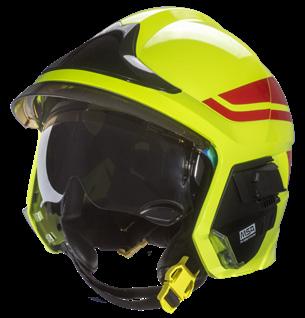

This article, bob rea QFSM’s fourth exclusive piece for FME, begins with him thinking about the effects of the devastating earthquake which struck Turkey and Syria in February this year and reflecting on the impacts of training programmes he has been responsible for. Recognising how some of the students who have passed through his training programmes have been able to render aid in these events.

during my recent programme management in the USA, one of the suite of programmes covered specialist rescue, training in: Rope Rescue
Urban Search and Rescue (USAR) Train Rescue
This was an eight-week programme, which was designed to develop students with little or no experience in these subjects to being able to operate safely in the challenging environments these rescues present. These areas are of particular interest to me, stirring passion to deliver the highest standard of training, expanding hazard awareness of the students to ensure that they

were able to identify hazards in the real rescue environments and competence in the techniques to locate, gain access and rescue entrapped casualties. I spent time working with the delivery team to design a sequential development programme, insisting on expanding the FEMA model for the USAR training to include the technical search discipline.
I see this technical search as an essential element of a USAR technician’s competence, as it is the initial phase of the rescue and a skill that requires continual practice to maintain and continue to develop enhanced competence. The skills required in this discipline use simple techniques to operating technical equipment for listening and visual investigation of void spaces. We followed the FEMA model after this, spending time looking at the built environment, engineering systems and safety before moving to the physical skills of:

breaching and breaking – creating access to the casualties, using a blend of demolition tools and hot cutting equipment shoring – stabilising buildings using both pneumatic/metal shoring and timber shoring, lifting and moving – the art of controlling and moving large loads safely using simple levers and rollers, through rope systems to using heavy equipment.

To ensure that the programme was being delivered to my exacting standards both in content and safety I would regularly attend class to observe. The lead instructor and I are close friends from the fire service family, bonded further by our passion for USAR, so he would smile when I entered the room. I found it difficult not to be directly involved with the delivery and developed a habit of pacing at the back of the room, which became a signal to the instructor that I felt I had something to add
to the session. The lead instructor would say ‘Come on up Bob, I can see you are desperate to get involved and if you stay there, you will wear a groove in the carpet’. I later overheard him talking with his company CEO the Father of USAR, ‘Bob forgets nothing, he is an amazing font of knowledge, including minute details’ that made me smile as it was a great complement from a person I admire and respect.
A key challenge whenever I have delivered USAR training, is getting the students to accept the risks they may be exposed to and the levels of PPE they should wear to protect themselves. This is especially difficult when the weather is hot, training days for this programme were regularly 330C plus. The cause of this is a lack of risk awareness, which is the same in all industries when new personnel begin. It is only over time that risk awareness improves, as competence and experience increases. To help begin students on a safe learning journey, I insist on, as a minimum, respiratory protection with a particulate filter able to capture the fine dust and spores encountered when buildings collapse, eye protection, gloves, protective boots and long trousers and sleeves. As mentioned in a previous article during this suite of programmes, cultural differences provide a significant challenge in managing risk. I had to manage three cultures and their different risk appetites, from the perceived ‘Ultra Safe’ UK to the risk hungry. In training, students see the likelihood of sustaining an injury as minimal, as the instructors will be overseeing their operational actions, have risk assessed equipment, venues and activities, they feel ‘safe’.

To illustrate the potential of harm being caused to them, I ask them to reflect on the devastating effects of prolonged silica dust exposure on the rescue teams at collapsed structure incidents.





Search Cameras (Narrow heads with flexibility for void searching), Audio and Seismic Detectors (Hearing sounds and detecting vibrations), Binoculars, Digital Cameras, Chemical Light Sticks (Lighting voids and providing comfort to casualties), Loud Hailers, Confined Space Communication System, Marking Paint or Crayons (Completing the INSARAG Marking system, identifying hazards and casualties) Thermal Image Camera, Lighting, personal and scene, Canines
Setting the standards of performance and protection is essential throughout training, as this helps establish good habits. Making it more likely that these habits will always be employed in the ‘real world’ and thus reduce rescuer exposures to hazards and improving their long-term health. It is vitally important for rescuers and their managers to establish good behaviours and encourage other attendees to follow suit. With the advent of rescuer cancers being more prevalent than in many other careers, protection is a form of prevention and as instructors it is our duty to develop these behaviours.
To culminate the programme, we designed an extended realistic simulated multi-casualty collapsed structure rescue exercise scenario on one of the ‘bespoke’ exercise venues at the training location to provide an unrivalled experiential learning opportunity, testing the students in as close to the real environment as possible. The venue simulates a range of collapsed concrete buildings surrounding a ‘Real’ rubble pile, covering a city block in size, where casualties can be placed in, on and under the rubble, allowing the students to apply the knowledge, skills and understanding of USAR operations. The students encounter all the elements that have been discussed and trained for through the delivery programme and they are required to undertake appropriate mitigation and safely rescue the casualties.
When an earthquake strikes, I always follow the event closely, seeing if any of the personnel I have trained attend. On this occasion I was watching the news and following social media and saw that the UK International Search and Rescue (ISAR) team were being mobilised. This filled me with pride, especially when they were reported to have used their capabilities to successfully rescue persons trapped within the devastation. The realisation that the training I began, delivered and managed was being used at such a disastrous event with great success, is a great feeling. I recognised several of the team who had directly received training from both my team of tutors and I. What amplified my feelings of pride was when I received a message from me lead instructor in the USA, who sent me pictures of the Middle Eastern students preparing to deploy to Turkey to provide support to those in need.
Both he and I exchanged calls sharing in the success of the programme and realising that the training we had delivered was making a difference. Giving others the benefit of our knowledge, skills, understanding and experience ‘Giving Back’.
Concrete Saws (Cutting through the building material), Cut-off Saws, Angle Grinders, Concrete Breakers (large and medium), Reinforcing Bar Detectors (To help map the rebar pattern to aid penetration plan), Concrete Bolts, Masonry Hammer Drills, Core Drills (Creating initial hole for camera void search), Mutli-Gas Atmospheric Detectors and Monitors (Detecting hazardous atmospheres), Hand Tools, hammers, chisels, bolt cutters etc, Prybars, Reciprocating saws, Hot cutting torches
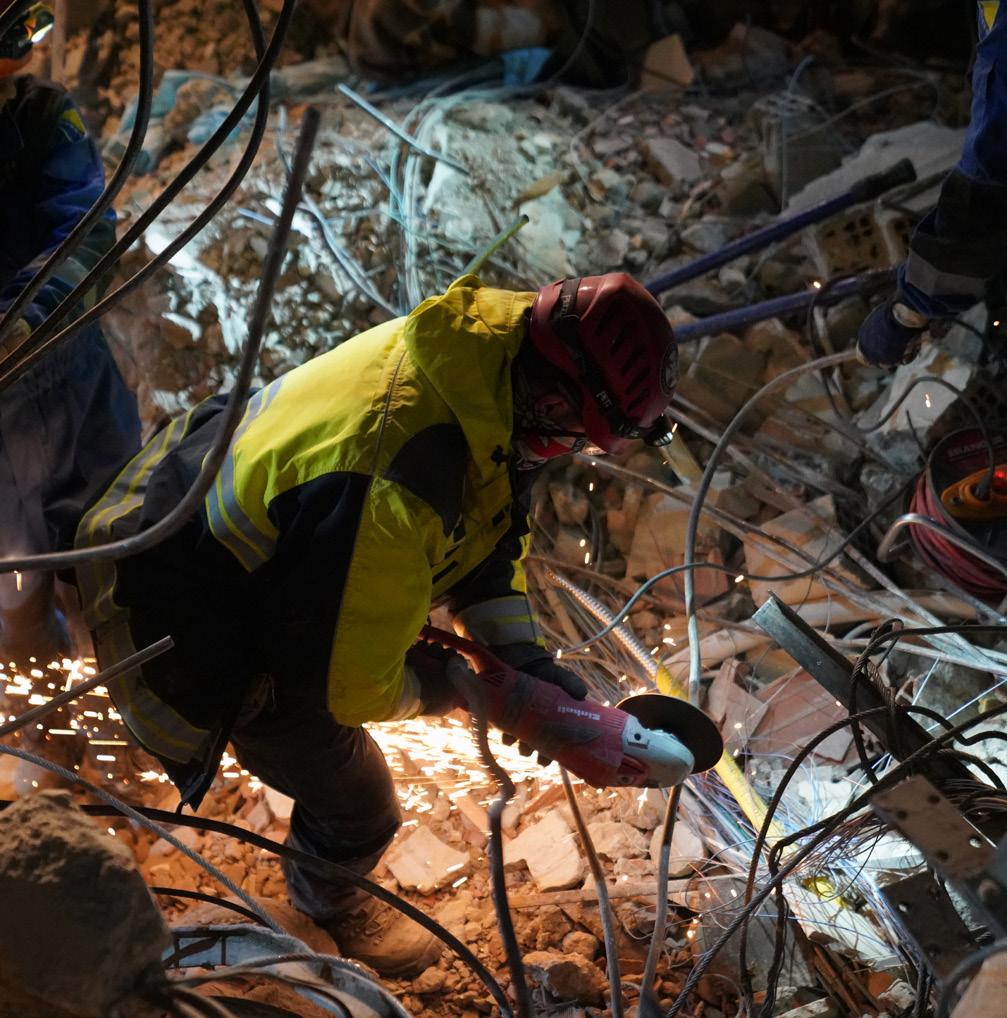
Shoring
Nail guns, Palm Nailer, Circular Saws, Chop Saws, Chain Saws, Metal Shoring Systems, Spirit Levels, Hand Tools, Hand Saws, Hammers, speed Squares, Tape measures etc, Timber (Shoring and cribbing)
Metal Levers (Normally 1.8m long), Pullies, Rope (Non-Life Safety and static), Webbing Slings (Lifting and anchors), Metal Slings, Karabiners, Lifting Shackles, Rollers, Tripods, Bipods and/or Quadpods (To provide an elevated lifting point), Hand Operated Mechanical Winch, Anchor Bolts, Anchor stakes, Sledge Hammer, Hammer Drill, Hand tools, Tape Measure, Hammer, Screwdriver
General
Generators, Compressors, Electric Cables, Working at Height Equipment and Harnesses, Rope Rescue Equipment, Confined Space Stretchers, Stretchers, Hand Tools, Shovels, Spades, Buckets, Marking Equipment, Record Keeping
Plant
Excavators, Cranes, All-Terrain Vehicle Small (Equipment transport)















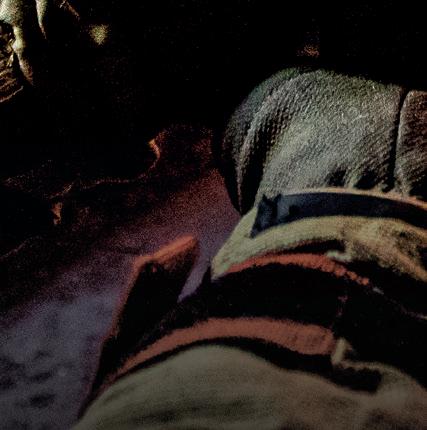






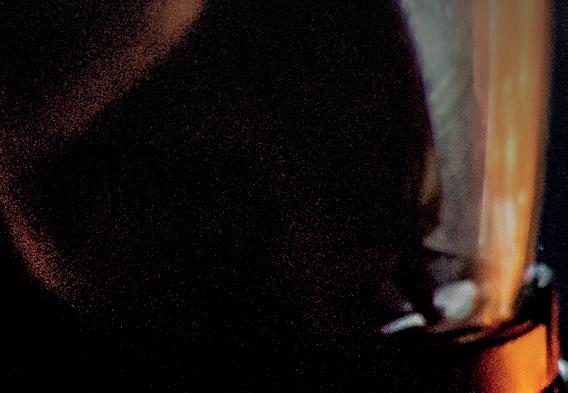
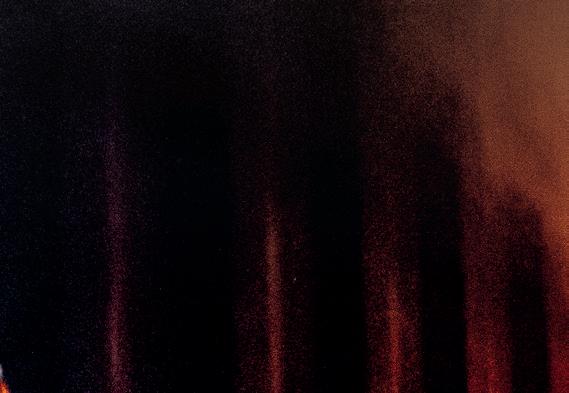





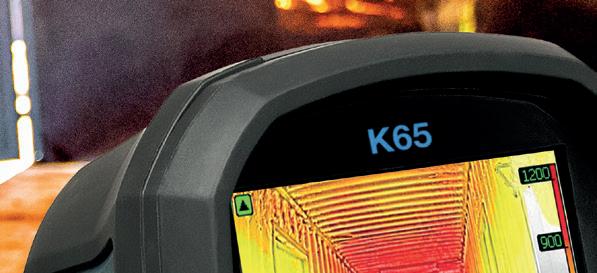




common causes of ignition of a firefighter’s top layer apart from flames, flying cinders and smouldering materials include exposure to spark or spatter from cutting and other associated activities, ignition of flammable contamination on the garment, contact to or very close proximity to molten metal, flash fire or explosion of combustible dust.
Normal fibres used in workwear garments such as polyester, cotton, viscose and nylon will catch fire if exposed to an ignition source and continue to burn after the ignition source has been removed.
Fire resistant fabrics and garments are designed to resist ignition, to prevent the spread of flame from the immediate area of exposure to the heat source and to self – extinguish either immediately or within a very short space of time after the heat source has been removed.
PPE
The driving force behind the business of FR fabrics and garments in the EU is legislation. Any items sold in the EU are governed by the PPE Regulation (EU) 2016/425.
PPE can be broken down into 2 levels:
Primary PPE: refers to clothing and items designed for use in work end uses where there will be significant exposure to heat, flame and or molten metal splash; for example foundry protection suit.

Secondary PPE: refers to clothing and items designed for continuous wearing in work end uses where there is intermittent exposure to flame, heat and or molten metal splash, for example mechanic’s overalls. Secondary PPE is often worn under primary PPE. The majority of the FR PPE fabrics that Carrington Textiles manufacture end up in secondary PPE.
The protection offered by secondary PPE can be overcome if there is excessive exposure. As a supplier of fabrics for PPE if you are asked for a fabric for a particular end use, you can only offer guidance, it’s the job of the end-user to make a risk assessment of it for that working area.
Flame resistant: Fabric or garment which is difficult to ignite and will self-extinguish. The product may be treated with chemicals to
give it this property or it may be inherent due to the components use in the manufacture of the fibres.
Flame retardant: If you are being particular about the terminology, flame retardant refers to the chemical used to give flame resistance. But people often say our fabrics are flame retardant.
Flame proof: These are fibres that are unaffected by heat, e.g., glass, asbestos, carbon, ceramic, etc.
Stoll curve: This is a graph which has time and thermal energy plotted on it to measure at what point pain and or second-degree burns occur. Named after Alice Stoll, who along with Maria Chianta worked in the 1950s and 1960s burning themselves, sailors, pigs and rats to establish when pain and burns occurred in relation to the amount of heat used and length of exposure.
Flashfire: These occur in environments where fuel and air are mixed in adequate concentrations to combust, flash fires move rapidly and are typically less than 3 seconds. Garments are assessed for protection in the lab on a manikin, sometimes called the Thermo-man, although BTTG have called theirs Ralph (Research Aim Longer Protection from Heat). The manikin has several sensors which detect the heat rise and report, pain, 1st degree, 2nd degree and 3rd degree burns when the garment is exposed to an intense gas flame. Normally testing is done to 3 seconds, although some Aramid manufactures test to 4 seconds. The limit is 50% burns (excluding the head and hands). Test exists as ISO13506 and is also part of NFPA 2112.
Afterflame: The sample continues to burn after the ignition source is removed.
Afterglow: The sample continues to glow (like an ember) after the ignition source is removed. Normally if the afterglow stays in the already charred area, it is discounted but if the glowing spreads into the unburned fabric then the duration of the afterglow is measured.
Char length: This is not used in the EN ISO tests but the NFPA standards from the USA and the Russian standards ask for it. Basically, a gas flame is applied to the edge of a vertical fabric for a set number of seconds, and the length of the char caused is measured.
LOI: Stands for Limiting Oxygen Index. Air contains approximately 20% oxygen, it is possible for some FR fabrics to burn if the oxygen content of the atmosphere goes above the LOI of the fabric. For example, if you have a fabric with and LOI of 28 and the wearers are working in an atmosphere of 30% then it possible that the garments will still burn. Oxygen rich atmospheres are not normal workwear environments so it shouldn’t be worry.
Fire Tetrahedron / Fire
Pyramid: The fire tetrahedron refers to the four aspects that are needed for a fire to burn, these are oxygen, fuel, heat/energy and a chemical chain reaction. If any one of these items is missing then sustained combustion is not possible.

The easiest way to think of “inherent” is that the flame resistance is an intrinsic property of the fibre used to make inherent FR fabrics. Treated fabrics or fibres have had a chemical applied to them after the fibre or fabric has been produced.
There are several treatments on the market that offer no durability, these are not used or should not be used in workwear articles. Workwear articles need a level of durability, usually set by the supplier and can be as little as 5 domestic washes at 40°c or for the lifetime of the garment with industrial washing. There is no right or wrong fibre or fabric, each one will have certain properties.
To read more about the difference between treated and inherent FR fabrics visit Carrington’s Knowledge Hub: https://hub.carrington.co.uk/resources/flame-retardant-fabricsinherent-or-treated/.
Arc test: This is where an electrical arc is created in a laboratory and sensors measure the amount of heat which passes through the fabric and if the Stoll curve is exceeded or not. Arc incidents can generate temperatures that are hotter than the surface of the sun, they give off large amounts of molten materials and the resulting sound waves can deafen workers permanently. Most of us will have seen an electrical arc at home when a light bulb blows, fortunately for us the breaker trips or the fuse blows, and the power is cut off.
The arc test can be broken down in to 2 types:
EN 61482-1-2 Box test: This is favoured by the EU. In this test the laboratory causes an arc within an enclosure, this enclosure is open at one end so it focuses the arc energy out of this one opening, in front of which are the fabric/garment and the test sensors. It simulates a worker carrying out a task on switch gear. The test is subdivided into two energy ratings which are Class 1 where the arc is generated at 4kA (4,000 amps) or Class 2 at 7kA (7000 amps), the criteria is a pass or fail. most of our Carrington Textiles FR fabrics pass Class 1.
EN 61482-1-1 Open arc: As the name suggests, in this test the arc is allowed to expand in 360°, three sensors are used to record the energy transmitted. In this test the arc is always made at 8kA, however it is held open for varying amounts of time so that the fabric can be assessed against different levels of energy. The old IEC version of this test gives the value in cal/cm² at which there is a 50% probability of 2nd degree
burns. This will be the ATPV (Arc Thermal Protective Value) or the EBT (energy to break open). EBT is used as the senor only covers a small area of the fabric sample so it’s possible for part of the fabric to be destroyed and it is not picked up by the sensor so if this happens the EBT is reported. It has not been formally adopted in Europe due to the 50% prediction of burns but is used in the USA as ASTM F1959 the EN 61482-1-1:2019 uses a value called ELIM and this highest energy value at which there is 0% chance to burn.
EN ISO 14116: This is a basic standard, there are requirements for strength and also a limited flamespread test is carried out and there are three classes or indexes as they are called:
Index 1: The flame does not spread, there are no flaming debris, no afterglow, a hole may be formed.
Index 2: The flame does not spread, there are no flaming debris, no afterglow, no hole formation.
Index 3: The flame does not spread, there are no flaming debris, no afterglow, no hole formation, the afterflame time of each individual specimen shall not be greater than 2 seconds.
For PPE, Index 3 is the requirement.
EN ISO 11612: This norm covers workers exposed to heat and flame. It’s subdivided into a set of physical requirements, e.g., shrinkage, tear, etc. that are mandatory. The fabric must then pass the limited flamespread test at the same level as EN 14116 index 3 for face (Class A1) and or edge (Class A2) ignition, it must then also pass at least one of the following Exposure to Convective Heat (Class B) Radiant Heat (Class C), Molten Aluminium (Class D) Molten Iron (Class E) and Contact Heat (Class F), there is also an optional requirement for a flash fire test done on a manikin.
Classes A1 and A2 are pass or fail, classes B, C, D, E & F are divided into 3 performance levels.
EN ISO 11611: This norm covers welders’ clothing, the requirements are spilt into two classes, Class 1 for light duty welding and Class 2 for heavy duty welding. Like EN11612 there are some physical tests that the fabric must pass as well as limited flame spread, radiant heat and welding droplets test.
NFPA 2112: This is a USA standard, its full title is “NFPA 2112 Standard on Flame-Resistant Clothing for Protection of Industrial Personnel Against Short-Duration Thermal Exposures from Fire”. Like the EN ISOs above the standard is split into a set of requirements, there is a flamespread test which is applied to the edge of the fabric when its new and after 100 washes, this test also includes a char length requirement. There are requirements for heat transfer and heat resistance. Whereas the Flashfire Manikin test is optional in EN ISO 11612, its mandatory in NFPA 2112. The standard also includes requirements on 3rd party certification and even how the certification body should carry out their audits.
NFPA 70e: This is a USA standard for electrical safety in the workplace. It covers a whole host of safety requirements (120 pages) and section 130.7(c)(14) directs you to ASTM 1506 Standard Performance Specification for Flame Resistant and Electric Arc Rated Protective Clothing Worn by Workers Exposed to Flames and Electric Arcs. Similar to the EN ISOs there are requirements for strength and shrinkage. The limited flamespread test is an edge test with char requirements on new and after 25 washes, the lab should also report the weight of the fabric test and also the colour fastness. Finally they have to test the fabric for arc flash protection using ASTM F1959.
Our thanks to Carrington Textiles who have produced this and many other insights on their Knowledge Hub ‘Flame retardant fabric terms, fibres, tests and norms’. hub.carrington.co.uk
the uk firefighter Contamination Survey was conducted between November 2019 and February 2020. This valuable research and the resulting report “Contamination of UK firefighters personal protective equipment and workplaces” published in January 2023 which provides comprehensive insight into the subject and will hopefully inspire positive action to protect firefighters not only in the UK but around the world. All serving UK firefighters were eligible to take part in the survey, which comprised 64 questions. A total of 10,649 responses were included for analysis, accounting for roughly 24% of the UK’s firefighting workforce.

The entire report written by A. M. Wolffe Taylor, Anna Clinton, Andrew Robinson, Louis Turrell, Anna A.Stec plus all references and supplementary documents can be studied here nature.com/ articles/s41598-022-25741-x but for this article, and for the benefit of FME readers, we have chosen to briefly set the scene from the Introduction and Abstract and reproduce the Conclusions:
Firefighters are directly exposed to potentially large quantities of toxins on a regular basis when attending fires. This puts firefighters at an increased risk of developing adverse health outcomes and emphasises the importance of managing those risks by implementing controls which protect against exposure. Personal protective equipment (PPE) is one of the most important control measures for firefighters as it is often impossible to implement higher-level controls in the dynamic and transient working conditions presented by fire incidents and where firefighters are (necessarily) in close proximity to exposure sources.
Currently, there is no UK standard which requires firefighters’ PPE to protect against chemical or biological agents (i.e. particulates, fire gases etc.), remaining an area in need of further research and development. In other countries, such research/development has led to innovations such as particle-blocking fire hoods, which have been adopted in the USA.
The UK Firefighter Contamination Survey assesses firefighters’ experiences and behaviours on a range of topics including health (cancer and mental health), PPE contamination/decontamination practices, and culture/habits and training. This manuscript also explores firefighters’ capacity for occupational exposure to fire contaminants through their PPE (i.e. PPE provision, maintenance, storage, fit etc.) and workplace. The Survey also provides information on firefighters’ PPE provision, decontamination, and storage practices.
The UK Firefighter Contamination Survey uncovered considerable variation in terms of PPE provision, cleaning and storage in UK Fire and Rescue Services. Several practices which increase the risk of direct contaminant exposure and/or cross-contamination were found to be prevalent amongst surveyed firefighters.
As such, the survey identified several opportunities for immediate intervention:
• Policies concerning the use of RPE should be revised and better enforced. Firefighters should wear RPE at all fires, including during pre- and post-fire tasks. Different levels of protection may be required depending on the task/fire, thus adequate RPE should be available at all times.
• Firefighters in managerial roles should set an example to more junior colleagues in terms of adhering to PPE/workplace maintenance and decontamination practices.
• To prevent the passage of contaminants from fire incidents back to stations/homes, PPE and workwear should be de-robed on-site of the incident, before firefighters re-enter the appliance cab.
• Contaminated PPE/workwear should be:
1. Bagged in disposable plastic bags on-site before being placed in any (fire and rescue service) vehicle in order to contain off-gassing/surface contaminants and then stored in a designated area of the appliance/vehicle, or preferably collected by professional cleaning services on-site.
2. All personnel who may have been contaminated at the incident, whether involved in firefighting activity or not, should undergo a process of personal decontamination before changing into clean workwear, such that only ever clean PPE/workwear makes contact with the interior of the appliance/vehicle cab.
• PPE storage and cleaning policies should prevent firefighters from cleaning PPE at home and/or transporting contaminated PPE in personal vehicles.
• Review of current policy for the decontamination of vehicles shows existing policy to be inadequate. FRSs should review their policy and develop suitable and sufficient decontamination procedures.
• The decontamination of appliance/vehicle interiors should be carried out in accordance with those improved procedures and should be conducted after every fire incident (however small) or other incidents where contamination is suspected.
• Storage of clean/ bagged dirty PPE also requires proper separation in order to prevent cross contamination, e.g. through enforcing clean/dirty zones in the station.
• Where PPE cannot or has not been collected on-site at an incident, dirty and bagged PPE should be sent for professional decontamination as soon as possible after every incident to ensure thorough removal of contaminants. This requires reevaluating the policies and provisions concerning supplies of pooled PPE stock, PPE fit, and the length of the professional cleaning service.
• Regular training/ message-reinforcement on the health effects of contaminant exposure and/or best decontamination practices may raise firefighters’ awareness of cross contamination and serve to reduce the prevalence of practices such as storing fire gloves within other items of PPE, laundering fire hoods in home washing machines etc.
• Finally, standardisation is required in order to ensure effective decontamination practices. Promoting high-quality, nationally consistent policy on minimising exposures to fire toxins will help to reduce the incidence of occupational diseases and cancers in UK firefighters.
“One typical water mist application is the protection of data centres”, explains Bettina McDowell, general manager at the International Water Mist Association (IWMA). IWMA member Marioff can report about two projects in the Netherlands.




The facility in Groningen is a multi-tenant data centre with customers across industries. One significant client is Overheids Datacenter (ODC) Noord, one of the four government data centres in the Netherlands, underscoring the need for uninterrupted operation.
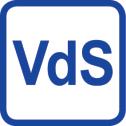
Business continuity at NorthC Groningen, as for all data centres, is paramount. Fire suppression in the facility is particularly challenging because of the need for the high airflow and highpower density. NorthC Groningen ultimately chose Marioff HI-FOG as the fire suppression solution to protect their critical infrastructure through Marioff’s partner FireX with a complete suppression and detection system.

The facility in Eindhoven is the first carbon-negative data centre in the world that also holds a Tier 4 certification, the highest guarantee of reliability possible, which means failure of their digital systems must be avoided at all costs. All systems and installations at the 1,200 square-metre facility must be redundant and separate.
This meant thinking through the fire protection plan from the ground up, while simultaneously meeting the fire suppression challenges of high airflow and power density presented by data centres. Finally, Eindhoven’s commitment to cradle-to-cradle sustainability principles meant accounting for water usage.


The fire safety concept for the facility was developed in collaboration with RHDHV and FireX. For Eindhoven, detection was made highly sensitive, with automatic and localized discharge to protect the data centre’s business continuity a tailor-made fire protection solution for protecting the most critical data.





HI-FOG discharges high-pressure water mist that effectively suppresses, controls and cools fires. It uses less water than traditional sprinkler systems, minimizing water damage in the event of fire and reduces the possibility of a false discharge when compared to gas suppression.


Further applications will be presented at the 22nd International Water Mist Conference in Copenhagen, Denmark, on 11th and 12th October 2023. The call for papers has been released, the abstract deadline is 15th May.

The Society of Fire Protection Engineers (SFPE) is the world’s leading professional society for fire protection and fire safety engineering and has its headquarters near Washington, DC, USA, and in Brussels, Belgium. The Society is comprised of nearly 5,000 members and 120 chapters from around the world committed to engineering a fire-safe world. The SFPE holds regular in-person events and has developed 60+ on-demand courses, produces three periodicals, and has authored numerous standards, guides, and the popular SFPE Handbook of Fire Protection Engineering. Working with SFPE’s publishing partner Springer, the second edition of the SFPE Engineering Guide to Fire Risk Assessment is expected to be available in late 2022 or early 2023. Learn more at SFPE.org.

Many water-based fire protection systems rely almost entirely on having an adequate water supply to help control or suppress fire. Local fire departments also rely on the water supply as a part of their response. These water supply systems are vast underground networks of pipes connected to a source of water. If that source of water is somehow lost or those pipes are damaged, the protection system will not work as intended.
In rural areas, small communities typically have only one source of water, and they may not have the resources to quickly fix any supply issues. If these areas experience some form of climate change, such as a drought, the water supply might not be adequate for their fire protection systems to function. Figure 1 shows the predicted water stress projections worldwide for 2040.

Climate change and water stress typically focus on domestic, agricultural, and industrial uses, and water-based fire protection systems are often not considered in the context of climate change. Therefore, this research is an important area to explore to ensure that codes, standards, and public policy have time to change and that education on the issue can be implemented.
Water-based fire protection systems are typically designed based on the available water supply of an area. Generally, the first task on a project involving an active fire protection system is obtaining information on the water supply. This information can be gathered by hand by physically performing a flow test; in a sufficiently urbanised area, a computer model can be used to determine
average supply. After gathering the supply information, the system is designed to work based on that water supply and the appropriate standard (i.e., NFPA 13, NFPA 14, etc.).
If the water supply evaluation is incorrect, the system may not be adequate to perform its intended function. If the water supply changes over time then the fire protection system may not work as designed, which can be devasting, particularly if the region is already in a drought.
Around the world, the climate is continuing to change and affect how fire protection engineers and designers plan for the built environment. Climate change is defined as a change in global or regional climate patterns over the long term (NASA, n.d.). According to NASA, climate change indicators have included
Virginia R. Charter, Phd, Pe & Justin Fletcher Oklahoma State University Department of Fire Protection and Safety Engineering Technology; Cristian Contreras Nieto, Phd, Pe Oklahoma State University Department of Energy Servicesland and ocean temperature increases, ice melt from glaciers, rising sea levels, and the frequency and severity of extreme weather. Extreme weather can include heatwaves, wildfires, droughts, hurricanes, and polar vortexes. These extreme weather events can lead to water supply issues for domestic, agricultural, industrial, and fire protection use.
Fire protection systems are often designed based upon a single location and point in time from a water supply test. This means that on a given day at a certain time, the water flow test provided this much flow and pressure at a specific location. Fire protection design may not always take into account the nuances of weather event impacts on fire protection systems (O’Connor, 2020). Fire protection design, water supply, and climate change must all be considered when designing systems for the built environment as well as making tactical decisions for responding firefighters.
If construction on a large project lasts multiple years or if there is a modification to the building requiring a change to the fire protection system after construction is complete, the water supply may have changed dramatically. Further, urban and rural communities must keep up with the growth of the community and its water needs to ensure the infrastructure can continue to support the demands. A radical change to the water supply can significantly impact system performance, and in some cases, the system may no longer be adequate for the building based solely on the new water supply.
Requirements and policies regarding fire protection systems vary across different regions. The vast number of these different requirements should be examined when trying to determine how a water shortage will affect fire protection systems and fire department suppression and response efforts. Understanding how heavily these differing regions depend on the water supply for their fire protection systems sprinkler systems, fire department response and suppression is key to understanding how to develop policies and plans to help combat water supply shortage issues.
Upgrading infrastructure to provide adequate and reliable water supply and maintaining those systems is critical. While some areas have implemented alternative solutions for handling water shortages, there are limited solutions when fire protection systems are involved. Creating and developing policies that provide a means to upgrade the current water supply infrastructure to help to combat water shortages will also improve fire protection system performance when water shortages occur.
In tandem with developing policies to upgrade water supply infrastructure, plans to account for water shortage should also be developed in areas that do not yet have them. Water shortage plans should include various stakeholders and should be adapted to fit each region’s climate, landscape, and water supply configuration. The plans should be tailor-made to each community’s needs. Including all the stakeholders that have an interest or a possible solution will help ensure the water shortage plan will be as thorough and robust as it can be. Figure 2 shows some stakeholders that should be included when planning for and responding to water supply stress or scarcity.
In countries with easy access to an ocean or a large saltwater sea, desalination plants could provide a reliable water supply. While these bodies of water may not be fit for human consumption without proper desalinisation, many of these countries already have desalinisation plants in place. Ramping up production and increasing the number of plants will lead to a reliable and easily accessible water supply in these areas.
Creating a reliable and accessible water supply will also ensure that fire protection systems are protected from water supply shortages.
Members of the fire protection community will need to consider possible water shortages when designing their systems. This will require a twofold approach:

1. It will be necessary to identify areas that could be subject to water shortages in the future. Specialists will have to learn how to recognise areas that might be subject to future water shortages and will need to involve stakeholders that are more familiar with the area and its climate.
2. Solutions and alternatives to supplement fire protection systems must be implemented when designing these systems. Adding safety elements to ensure sprinkler systems and fire department suppression teams can operate effectively even in the instance of a water shortage will help to maintain capability to combat a fire emergency. An education policy to verify that fire protection specialists have accounted for water supply shortages in the design and commission of their systems should be implemented. Fire departments should also be educated about the possibilities of water shortages, even in areas where shortages are considered unlikely, to ensure the proper controls are in place to ensure an adequate and reliable water supply to combat fire emergencies.
Developing a methodology to determine which regions are at risk for a water supply shortage and educating designers to use this resource is important. Being able to quickly and relatively easily determine whether a region is subject to a water supply shortage will help fire protection engineers and other stakeholders when developing/designing their fire protection systems. This will ensure reliability and effectiveness of a fire emergency during a water supply shortage scenario.
References
Charter, V.R., Fletcher, J. (Working Paper). “Water supply & Climate Change: The Impact of Water Stress on Fire Protection Systems,” SFPE Foundation Project.
Healy, J., Fausset, R., Dobbins, J. “Cracked Pipes, Frozen Wells, Offline Treatment Plants: A Texas water crisis.” The New York Times (2021, February 18). Accessed at: https://www.nytimes.com/2021/02/18/us/ texas-water-crisis-winter-storm.html.
Mlaba, K. “How Cape Town Went from Water Crisis to Overflowing Dams in Just 2 Years,” (2020, October 9). Accessed at: https://www. globalcitizen.org/en/content/cape-town-water-crisis-day-zerooverflowing-dams/?template=next.
NASA (n.d.). Overview: Weather, Global Warming, and Climate Change. Accessed at: https://climate.nasa.gov/resources/global-warming-vsclimate-change/.
O’Conner, B. “Establishing a Water Supply as a Part of a Sprinkler System,” NFPA Journal, July August 2020.
Petruzzello, M. “Water Scarcity,” Encyclopedia Britannica. (2021, February 3). Accessed at: https://www.britannica.com/topic/water-scarcity.
With an unprecedented rise in natural disasters, IFE CEO, Steve Hamm, provides an update on how stringent building safety laws will minimise
over 50,000 people have now lost their lives in southern Turkey, close to the Syrian border, due to the devastating effects of the recent earthquake. The event that took place on 6th February had a magnitude of 7.8 and was followed by powerful aftershocks, claiming thousands of lives and causing significant damage to local infrastructure. While natural disasters cannot be prevented, substandard construction practices can be a major contributing factor to the severity of the damage.
This highlights the need for an effective building safety regime that encompasses all aspects of safety, not just fire. A key focus of our Rescue Engineering special interest group (SIG) is to drive these advances and ensure that fire safety design strategies integrate emergency responses globally.
The built environment within developed countries can sometimes lead to the use of substandard materials and unsafe building practices. It was recently announced that UK structural and civil engineers have travelled to Turkey, offering support in the investigative work. Efforts have already uncovered evidence of substandard construction, weakening the stature of buildings.
The Earthquake Engineering Field Investigation Team (EEFIT) will combine their research with the teams in Turkey with the aim of learning lessons from the earthquake and finding ways to improve the construction of buildings to make them more resilient.
One of the main reasons for poor construction practices is the lack of enforcement of international building safety laws. While many developed countries have strict building codes and safety regulations in place, these standards can be overlooked in developing nations. This results in a lack of oversight and regulation, which can have tragic consequences.

As the global professional body for fire, the IFE continues to be a part of international conversations around building safety, promoting a collaborative workspace for fire safety professionals within the built environment.
Stricter international building safety laws would not only save lives, but also improve the safety of buildings in developed countries. In an increasingly interconnected world, natural disasters can have far-reaching consequences. By promoting building safety worldwide, we can help prevent tragedies from occurring and build a more resilient global community.
Building safety standards in developing countries need to be promoted and enforced more by the international community. This includes giving local engineers and builders technical help and training, as well as setting up stricter rules and penalties for not following them. Governments and international organisations need to work together to ensure that building safety gets the attention and resources it deserves.
While climate change tends to grab media attention through these extreme weather events, it has a much deeper impact on how fire engineering will need to adapt in future decades. It will determine how we run our operations, plan emergency responses, protect responders, buildings, infrastructure, communities, and how we work with wider stakeholders to improve safety and resilience.
By promoting and enforcing these standards, we can help prevent unnecessary loss of life and mitigate the impact of natural disasters around the world. It is time to act and prioritise building safety as a key component of sustainable development.
In addition to our existing Rescue Engineering SIG, the IFE is currently in the process of establishing a new group to raise awareness of issues related to emergency response engineering and to further establish global standard practices.
The Emergency Response Engineering SIG will share knowledge with the IFE membership to educate the wider sector in this area of fire engineering as well as seek to establish common and interoperable safe best practice for rescue engineers.
The IFE is dedicated to working alongside other sectors to evolve fire safety knowledge. If you work within the built environment and would like further details about how IFE membership can help you within your role, please visit www.ife.org.uk/Membership.

Attract new delegates and enhance your brand
If you or your organisation provides training, you could apply for IFE recognition status. Our Recognitions Team benchmark courses, providers and educational programmes to the highest standard, ensuring a competent workforce across the fire industry.
Prospective students can be more confident that an IFE recognised course, provider or educational programme ticks all the boxes for their learning and future careers in the fire sector.

The N45-Series is the thirdgeneration fibre optic Linear Heat Detection (LHD) system from AP Sensing. The LHD N45-Series boasts the longest certified distance range on the market, with up to 16 km and four channels for all distance ranges.

It is incredibly intuitive to use with a fully integrated web server offering simple configuration via browser, one-click validation of compliance configuration settings, 2000 configurable alarm zones per channel and up to 98 integrated relay contacts. Additionally, the system offers a cost-effective solution that is easy to install, low maintenance, immune to electromagnetic interference (EMI), and provides precise location and monitoring of fire events.
Fiber optic LHD technology uses a fiber optic sensor cable to measure the temperature at every point along the entire cable, detecting changes in temperature and hotspots along an entire asset. For example, for 10 km of cable, the system measures 10,000 temperature points every five seconds.
This technology is currently used globally as a fire detection system for conveyor belts, traffic and utility tunnels, mines, data centers, solar panels, tanks and storage facilities offers a costeffective solution that is easy to install, low maintenance, and offers maximum reliability even under severe conditions including dust, dirt, and corrosive atmospheres, extreme temperature changes, radioactivity, explosive atmospheres and EMI.
The system offers the most complete set of type tests and certifications on the market including EN54-22 (VdS), UL 521 (UL), CAN/ULC-S530, SIL-2, and ATEX and IECEx for critical areas.
In industries which rely on light for the safety of its personnel, having the right tool for the job is essential and Nightstick Dual Light products, are the perfect combination of not one but two tools.

Nightstick's Dual Light products feature a unique design that offers a spotlight and floodlight in one product.
According to the National Safety Council (NSC), which has been collecting safety data for 100 years, the number one leading cause of nonfatal workrelated injuries is the category referred to as "falls, slips, and trips."
The key advantages of a dual light product is that in addition to the
traditional forward-facing flashlight beam that illuminates distant objects, a secondary soft area floodlight is added to help users regain the lost peripheral vision caused by pupil constriction. This downward-facing floodlight allows users to see the immediate area in front of them and to their sides as they navigate to their project or workspace.
NIGHTSTICK nightstick.com
Silane is a colourless, flammable and poisonous gas, which is easily ignited in air, reacts with oxidising agents, is very toxic by inhalation, and is a strong irritant. Silane is lighter than air and under prolonged exposure to fire or heat the containers may rupture violently and rocket.
The Sensorix SiH42 is a customised product developed to detect low levels of SiH4. It is a 3-electrode sensor for industrial safety applications, including the semiconductor industry and is designed to be used in safety critical applications. Compared to the Sensorix SiH4 50, the measuring range of the Sensorix SiH4 2 is lower and its sensitivity is higher.

• Measurement Range: 0 - 2 ppm
• Sensitivity: 800 ± 400 nA/ppm
• Response Time (T90): ≤ 60 s at 2 min gas exposure
SENSORIX GmbH sensorix.com
LDA Audio Tech have launched a range which covers the needs of all types of public address and voice evacuation installations and which will also be EN 54-24 compliant.
These are two new ceiling loudspeakers, two horn speakers and three directive columns that complete the brand's range with new features and designs:
• NB-50TN (5" and 6 W) and CH-62TN (6.5" and 30 W) ceiling speakers.
• PS-15TN (15 W) and PS-30TN (30 W) exponential projectors.
• VTX-15TN (15 W and 2 drivers), VTX60TN (60 W and 8 drivers) and VTX90TN (90 W and 12 drivers) column speakers.
LDA AUDIO TECH lda-audiotech.com

An amount of money given by a school, college, university, or other organisation to pay for the studies of a person with great ability but little money.
A detailed study of a subject, especially to discover (new) information or reach a (new) understanding:
Both definitions from the Cambridge dictionary, both help in part to explain what the Institute is trying to achieve but not in its entirety.
As a professional body, the IFSM would like to encourage and support anyone wishing to research fire related topics of their own interest. The initiative makes up part of the Institutes plans to boost creativity within the industry and inspire the next generation of fire safety professionals.
Contrary to the definition, the IFSM is not looking for someone with great ability and little money. Applications are open to anyone worldwide and both members and non-members. If there is an area within fire safety that is of interest and there is potential that it would benefit from research, then we would welcome an application.
Last year the IFSM awarded two research funds of £2000 each, these projects are now well underway and due for completion and will be ready to share with the fire industry by the end of the year.
Dr Fiona Beddoes-Jones is looking to research whether Authentic Leaders create a climate of psychological safety, and they have a better fire safety record than less Authentic Leaders. Dr Fiona explained that quite a lot has been written about positive safety climates and in lowering the risk of accidents across a variety of contexts, such as the oil industry and nursing. However much less has been written about positive Fire Safety Climates; how they are created and the characteristics of those people who are most likely to create them. Authentic Leadership is a popular and much researched area of leadership style and has been linked to the creation of positive working environments such as inclusiveness and Psychological Safety. As far as we are aware nothing has been
researched or written about the interactions of linking these areas together, especially within the context of Fire Safety and with Fire Safety Managers in particular. This suggests a gap in our knowledge and the evidence base it would be beneficial to explore.
Sonny White, a young student with a passion for fire alarms is undertaking case studies of school buildings and assess the design of their fire alarm system in terms of appropriateness for those with sensory sensitivities. This builds on a Guidance Note that he wrote and that was published in May 2022 by the FIA on this subject.
This year the Institute has set aside further internal funds and is looking to award another financial grant of up to £2000 to the selected application. Applications for 2024 can be made online at https://ifsm.org.uk/researchscholarships/ up to the extended closing date of 31st July 2023. Our website gives details of the process and what you need to include within your application. Please ensure you provide everything asked for otherwise your application can not be considered. If you want to discuss this before you apply, please call the office on +44 (0)330 355 1286 and speak to one of the team.
…
More than 43,000 attendees from 131 countries gathered at the Dubai World Trade Centre for Intersec 2023.
INTERSEC, THE WORLD’S leading trade fair for fire protection, safety and security recorded its biggest visitor turnout in its 24 year history when the doors closed on its three-day run in January.


Along with the 43,305 industry professionals, more than 800 exhibitors from 55 countries spread across 48,331 gross square-metres in nine halls and the Trade Centre Arena. The visitor turnout saw a significant growth in international visitors, with attendees from the GCC, Europe, Asia, and the Americas accounting for 49 per cent of the total headcount.
As the doors opened on Day One it was apparent that exhibitors were in for a busy day as a constant flow of visitors moved endlessly through the aisles creating a real buzz.
Partnerships were prominent from the first day at Intersec 2023 with a Memorandum of Understanding being signed between video surveillance provider
Hikvision and the UAE’s Ministry of Interior, as well as headline collaborations between Sharjah Civil Defence and Austrian firefighting equipment provider Rosenbauer, and Indian satellite, digital cable, and broadband provider NxDigital and US cybersecurity technology company Cybereason.

Technology and innovation remained front and centre of the event with the exhibitor profile featuring some of the biggest industry names alongside sector entrants and innovators.
The event’s special features, both vast and varied in their focus, drew large audiences across the three days. The Attack Zone hosted by the Loss Prevention Certification Board saw exhibitors demonstrating their products, while there was also a Safety Walk protective gear showcase sponsored by EnSafe Evacuation Chair, Jutec, and Teijin and a Tech Stage featured VR solutions, anti-drone technology, and new safety materials.
There were also full houses for the powerful Intersec 2023 conference and knowledge-sharing programme. A dedicated Fire & Rescue Conference was hosted by Dubai Civil Defence, while a highly focussed Safety & Health Seminar explored the new MENA regulatory changes. The UAE Cybersecurity Council hosted a conference with attendees ranging from government leaders to CSOs and CISOs across the oil and gas industry, BFSI, healthcare and hospitality, and energy and utilities. Additionally, Intersec 2023 recognised the best of the security and safety industries through its awards programme, with winners being presented at a gala ceremony.
Over the three days we distributed 5000 copies of FIRE Middle East magazine – the last copy leaving the stand by the afternoon on the Thursday. And there were few people in the Halls who could disagree with the statement “Intersec 2023 has been a successful event for us, how about you?”
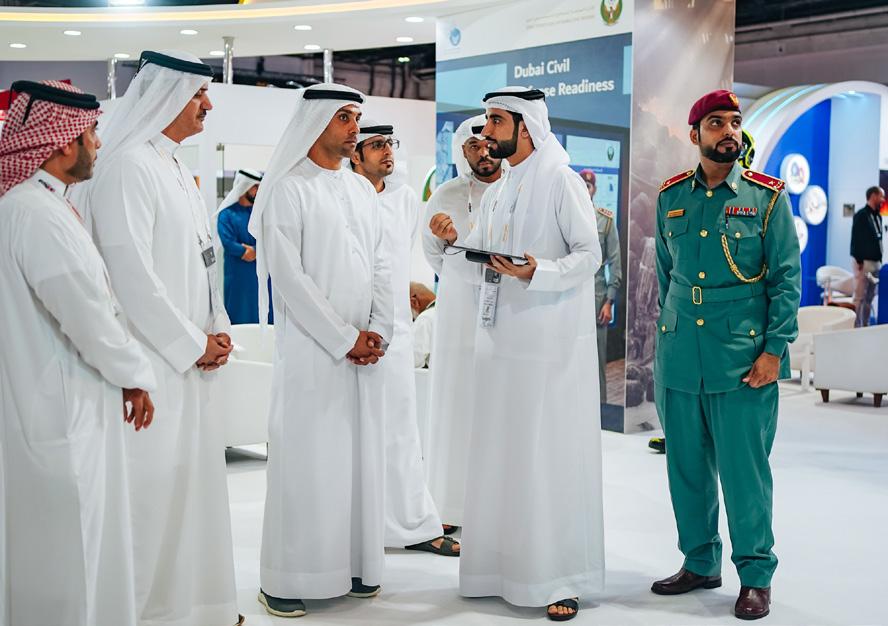
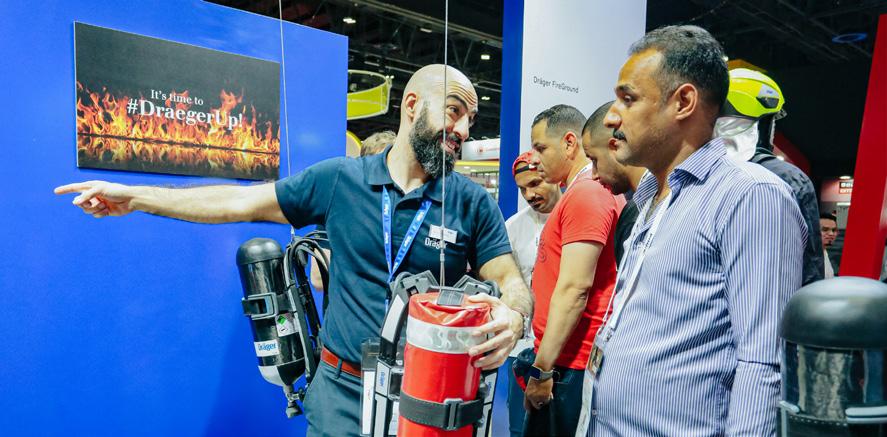
Now, Intersec organisers Messe Frankfurt Middle East are planning for the event’s silver jubilee edition to run at DWTC from 16 – 18 January, 2024.
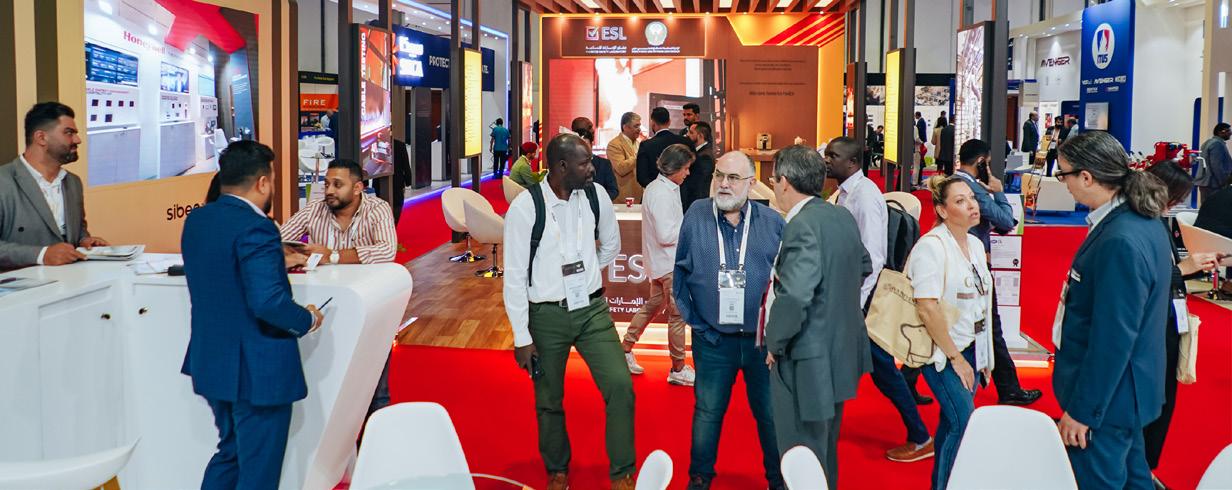
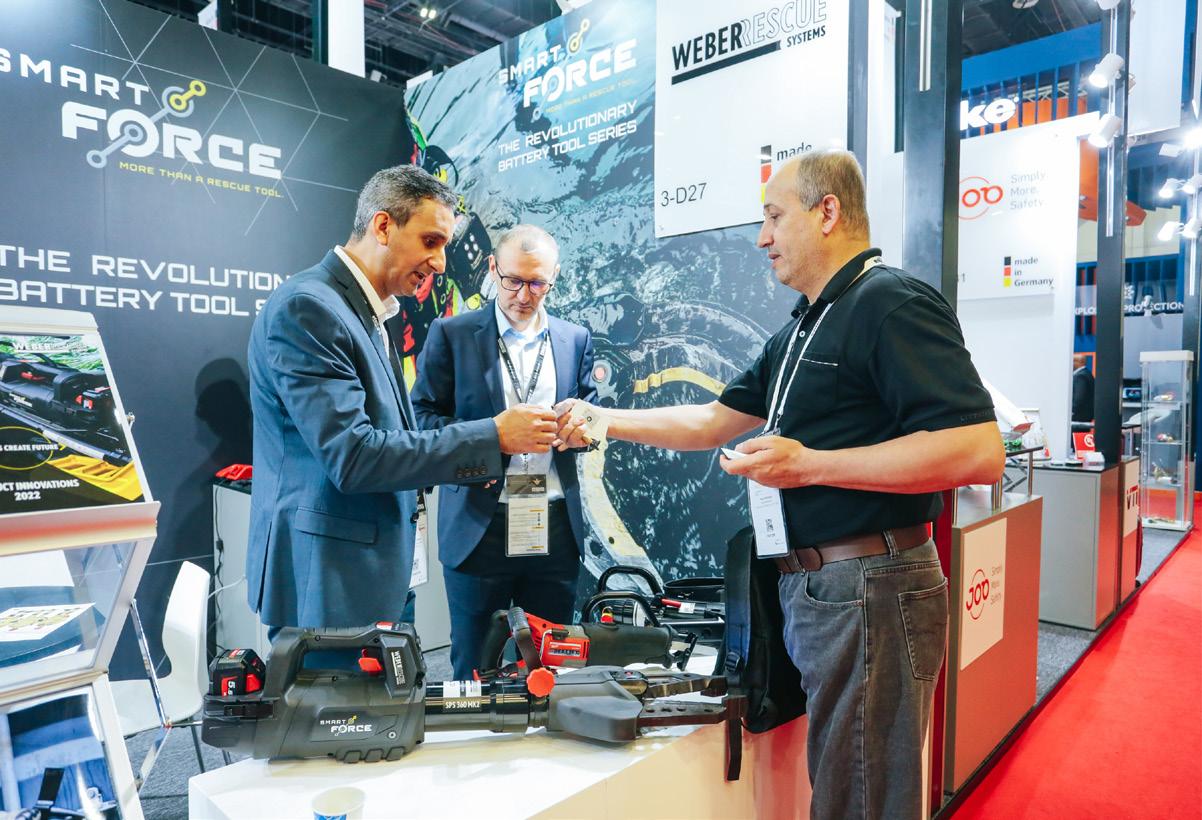
The winners of the Intersec Awards 2023 were announced at a gala dinner event at the Ritz Carlton, DIFC. Among the winners were Dubai Police, UAE based Atos and Protec Fire Detection from the UK, as well as individuals from Aman Security Training and NAFFCO. The Awards, which recognise people, products and companies for exceptional performance in the fire, safety and security industries across ten categories attracted almost 1300 entries.
Leader of the Year and Essa Ahmed Al-Mutawa of Dubai Civil Defence has been hailed as a rising star, receiving the Young Emirati Achiever Award. Al-Mutawa said, “I feel extremely honoured to receive the award, it will help me try to think positively and to give more to my work and company,” and paid tribute to Intersec 2023, adding, “And I would like to thank everyone who works for this great event.”
Fire and Safety Sustainability Product of the year recognised the Eco Land and Eco Sea products from Detectionloop; and Fire Product of the Year was presented to Protec Cirrus HYBRID Aspirating Fire and Smoke Detector from Protec Fire Detection. Dataanalytics platform chnnl, designed to help organisations create meaningful well-being and psychological safety strategies won Safety Product of the year, while a special award for Excellence in Community Service and Wellbeing was presented to Dubai Police for its Lost and Found service that takes advantage of artificial intelligence and digital technologies.
“Security, safety and fire protection play a vital role in the world, and the stars of the industries deserve to be celebrated,” said Alex Nicholl, show director at Messe Frankfurt Middle East. He continued, “The calibre of entries for the Intersec Awards this year was incredible, demonstrating the commitment and innovation of people and companies to driving advancement across the board. It is an honour to reward and celebrate these achievements and I send my congratulations to all of our winners.”
21 – 23
July 2023
More events and updates at: @firemiddleast firemiddleeastmag.com
INDO FIREX EXPO & FORUM 2023
9 – 11
May 2023
16 – 18
May 2023
FIREX UK firex.co.uk
THE AIRPORT SHOW
Dubai theairportshow.com
19 – 21
June 2023
NFPA CONFERENCE & EXPO
USA nfpa.org/conference/
21 – 22
June 2023
FEUERTRUTZ 2023
Germany feuertrutz-messe.de
31 May –1 June 2023
FIRE SPRINKLER INTERNATIONAL 2023, AMSTERDAM
The Netherlands firesprinklerinternational.com
17 – 19
May 2023
SECURIKA KAZAKHSTAN
Kazakhstan securika–almaty.kz
Indonesia indofirex.com
26 – 27
July 2023
FSD EXPO
India fsdexpo.in
6 – 8
June 2023
SECUREX SOUTH AFRICA 2023
South Africa securex.co.za
30 – 31
May 2023
GRMS – GLOBAL RELIABILITY AND MAINTENANCE SUMMIT
Qatar grmsummit.com
19 – 21
July 2023
SECUTECH VIETNAM 2023
Vietnam secutechvietnam. tw.messefrankfurt.com/ hochiminhcity/en.html
15 – 17
June 2023
KIELCE IFRE-EXPO 2023
Poland targikielce.pl/en/kielce-ifre-expo



